




2

3




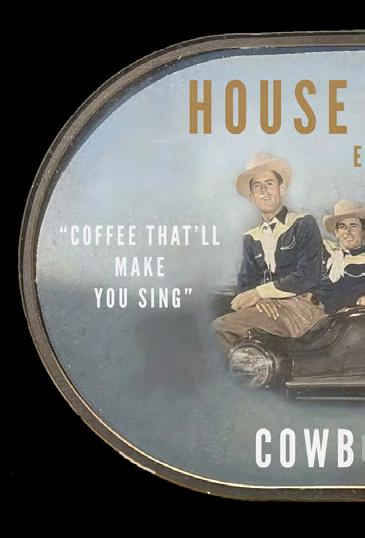

40 52 34 4
OUR CHOICE
The Bluegrass Standard is a life-long dream of Keith Barnacastle, who grew up in Meridian, Mississippi. For three years, Keith brought the Suits, Boots and Bluegrass Festival to Meridian. Now, with the Bluegrass Standard, Keith’s enthusiasm for the music, and his vision of its future, reaches a nationwide audience every month! Keith@TheBluegrassStandard.com
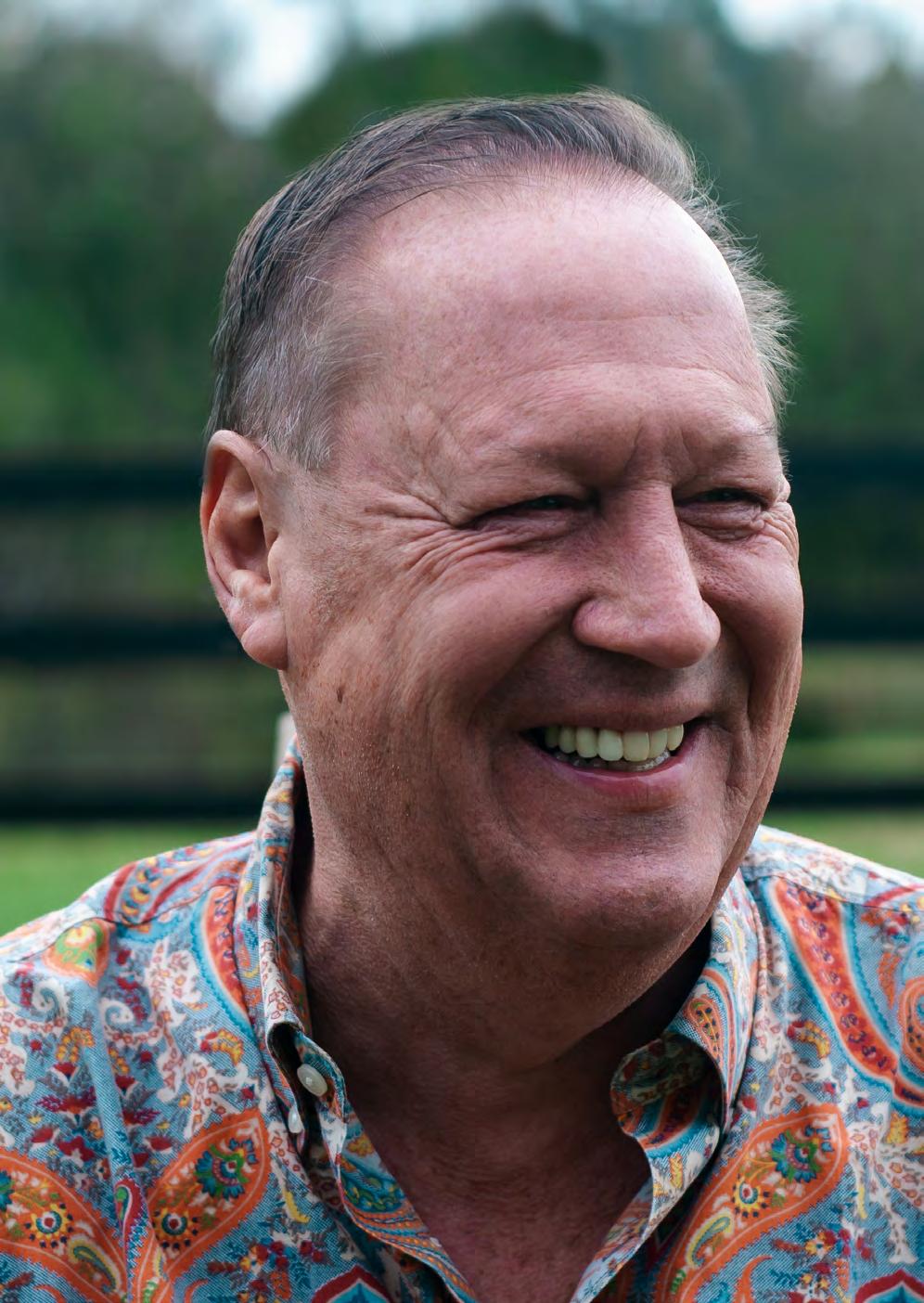
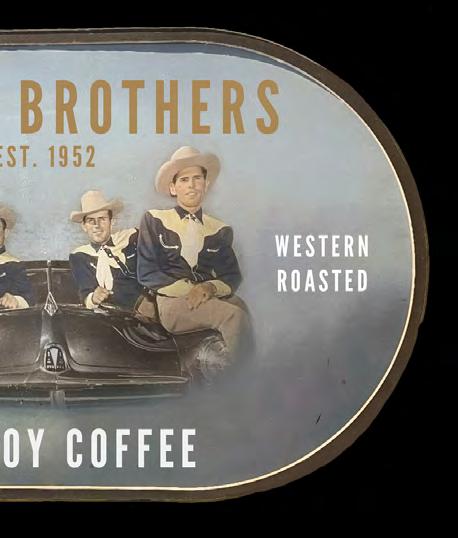



19 12 5 CONTENT ED SNODDERLY 08 HOUSE BROTHERS 12 BRAD REID 19 BRIAN DUFFY & THE TUESDAY MTN BOYS 24 SPECIAL CONSENSUS 34 THE ARCADIAN WILD 40 BOB FREE 48 WYATT ELLIS 52 GLOBAL FLAVORS 56 MARTY FALLE 62 FAN FOTOS 68
Keith Barnacastle • Publisher
Our Staff
Richelle Putnam • Executive Editor/Writer

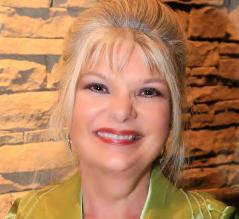

Richelle Putnam is a Mississippi Arts Commission (MAC) Teaching Artist/Roster Artist (Literary), a Mississippi Humanities Speaker, and a 2014 MAC Literary Arts Fellowship recipient. Her non-fiction books include Lauderdale County, Mississippi; a Brief History, Legendary Locals of Meridian, Mississippi and Mississippi and the Great Depression. Richelle@TheBluegrassStandard.com
Rebekah Speer • Creative Director
Rebekah Speer has nearly twenty years in the music industry in Nashville, TN. She creates a unique “look” for every issue of The Bluegrass Standard, and enjoys learning about each artist. In addition to her creative work with The Bluegrass Standard, Rebekah also provides graphic design and technical support to a variety of clients.
Susan Woelkers • Marketing
Susan traveled with a mixed ensemble at Trevecca Nazarene college as PR for the college. From there she moved on to working at Sony Music Nashville for 17 years in several compacities then transitioning on to the Nashville Songwritrers Association International (NSAI) where she was Sponsorship Director. The next step of her musical journey was to open her own business where she secured sponsorships for various events or companies in which the IBMA /World of Bluegrass was one of her clients.
Brent Davis • Contributor

Brent Davis produced documentaries, interview shows, and many other projects during a 40 year career in public media. He’s also the author of the bluegrass novel Raising Kane. Davis lives in Columbus, Ohio.

6
Mississippi Chris Sharp • Reviewer

Singer/Songwriter/Blogger and SilverWolf recording artist, Mississippi

Chris Sharp hails from remote Kemper County, near his hometown of Meridian. An original/founding cast member of the award-winning, long running radio show, The Sucarnochee Revue, as featured on Alabama and Mississippi Public Broadcasting, Chris performs with his daughter, Piper. Chris’s songs have been covered by The Del McCoury Band, The Henhouse Prowlers, and others. https://mississippichrissharp.blog
Susan Marquez • Journalist


Susan Marquez is a freelance writer based in Madison, Mississippi and a Mississippi Arts Commission Roster Artist. After a 20+ year career in advertising and marketing, she began a professional writing career in 2001. Since that time she has written over 2000 articles which have been published in magazines, newspapers, business journals, trade publications.
Kara Martinez Bachman • Journalist

Kara Martinez Bachman is a nonfiction author, book and magazine editor, and freelance writer. A former staff entertainment reporter, columnist and community news editor for the New Orleans Times-Picayune, her music and culture reporting has also appeared on a freelance basis in dozens of regional, national and international publications.
Candace Nelson • Journalist
Candace Nelson is a marketing professional living in Charleston, West Virginia. She is the author of the book “The West Virginia Pepperoni Roll.” In her free time, Nelson travels and blogs about Appalachian food culture at CandaceLately.com. Find her on Twitter at @Candace07 or email CandaceRNelson@gmail.com.
7
Ed Snodderly
 by Susan Marquez
by Susan Marquez
8
He is a musician. A singer. A songwriter. A storyteller. An actor. A club owner. Ed Snodderly has many talents and, by all accounts, uses them well. Ed was born in Knoxville, Tennessee and has traveled the world but always returns to his roots in upper East Tennessee. It’s where the music venue he is associated with, The Down Home (described as an eclectic music room), is in the heart of Johnson City. Ed was introduced to music at an early age. “I grew up in a musical family,” he says. “On my dad’s side, my grandfather, Gaines Snoderly (the spelling of “Snoderly” was changed somewhere along the line to Snodderly), was the Postmaster and farmer and played old-time fiddle. He and his brother, Silas, competed in fiddle competitions around Knoxville in the 1920s and 30s and usually brought home ribbons.”
Ed discovered a guitar in the attic of his grandparents’ farmhouse. “It was painted with a palm tree with silhouettes of a senor and senorita. I remember it having only three strings strung to it,” he says. “I found out much later that a painter had traveled through the community, and my grandfather had hired him to paint the barn and fences and then lastly the guitar.” The guitar was a no-name guitar bought by Ed’s father and brothers in the 1930s with money made working in tobacco fields. Ed recalls that when he was 12, he walked through the house with a baseball bat and glove. “My mom asked me as I passed by her if I’d like to learn to play the guitar. In the time it took to get to my bedroom door, I had shouted back a ‘yes.’” Later, when wanting an electric guitar, Ed’s dad sat him down at the kitchen table and told him he had to change from G to C and D chords much faster before thinking about getting an electric guitar. “To this day, that is the best guitar lesson I’ve ever had.”
Ed went on to play mostly the acoustic guitar. He also plays the dobro and other stringed instruments. He is an accomplished songwriter who teaches others to do the same at East Tennessee State University. “It’s really not so much that I teach students to write but that I show up with them and bring their attention to routine and keeping their ears open. I like to start off by asking them questions. You know the general acquaintance question like ‘What’s your name?’ ‘Where’re you from?’ ‘What do you do?’ I remind them it’s basically trying to get someone’s attention and then keeping it for a couple of minutes.” For Ed, it’s about continually conjuring, perpetuating, and calling on memories.
“Through the years, I’ve seen a lot of people perform. I keep learning. I realize more and more every day how people value and want to hear a good story told.” Many of Ed’s students have gone on to have successful careers in music. Amethyst Kiah is one of those students. “She’s kicking ass. We spent a lot of time together picking the guitar. Now she’s singing on my new album, Chimney Smoke.” The album is Ed’s tenth. “I’m really proud of this one. I wanted to make a record in Nashville. I got the best songs possible and asked myself if they were worth singing. I think the album is filled with above-average songs; at least, that’s what I think.” The album was recorded and mixed by the late Bil VornDick and produced by R. S. Field. “Bill Tyler was the graphic designer, and I’m sure you’ve seen his work before, Guy Clark’s Dublin Blues, etc.”
As an actor, Ed performed with the People’s Bicentennial Troupe in Boston and worked at the Barter Theatre in Abingdon, Virginia. He collaboratively created Echoes and Postcards with The
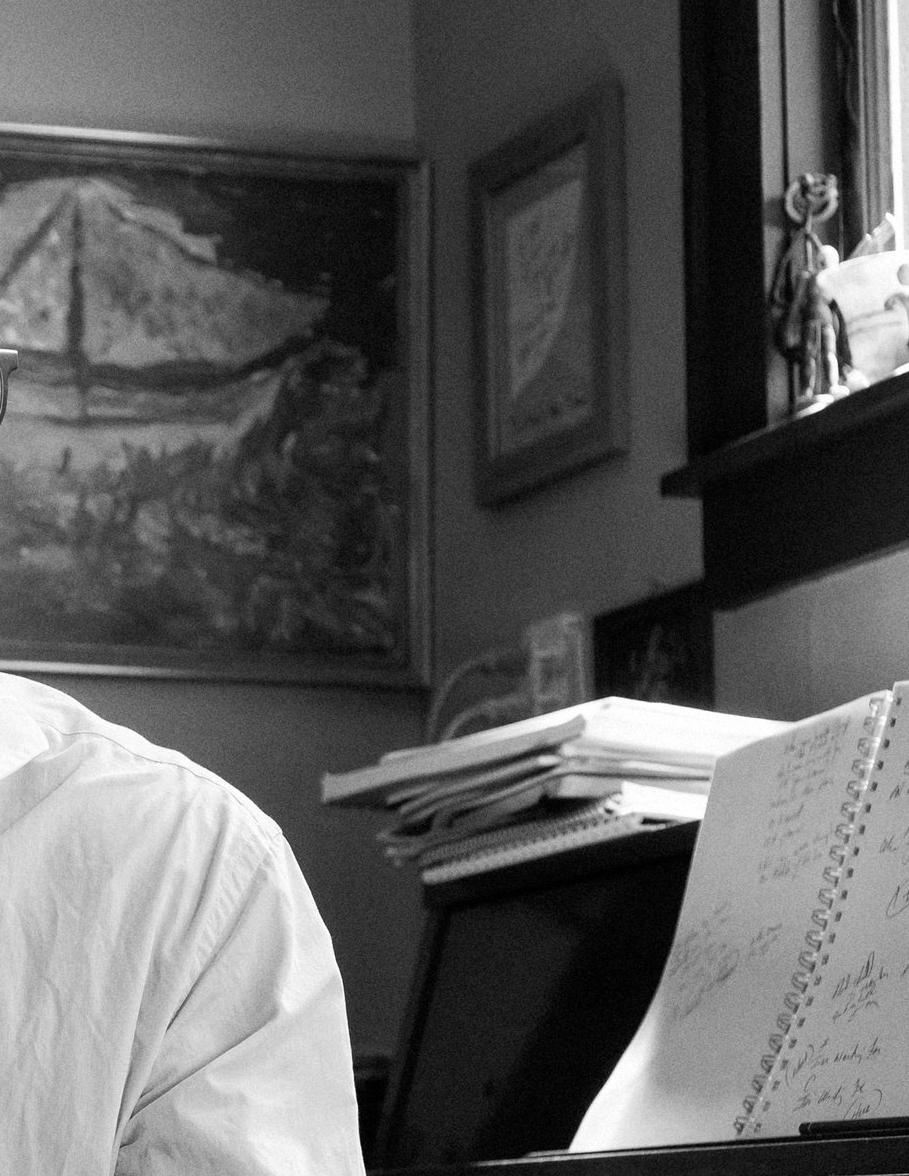
9
Road Company Ensemble out of Johnson City, a show that toured the southeastern United States, San Francisco, California and even Russia. He also toured with the original production of Fire on the Mountain from 2004 through 2007, performing at prestigious regional theaters, including Actors Theatre of Louisville; Denver Center for the Performing Arts; Seattle Repertory Theatre; and Northlight Theatre of Chicago. He made his film debut in 2000 in the award-winning Coen Brother’s classic Oh Brother, Where Art Thou as the village idiot. When he’s not touring or teaching, Ed will likely be found in the club he helped to found. “In the mid-1970s, I was playing in a noisy barbeque joint where I met Joe “Tank” Leach. A few years later, he said we should open a place for live music, and we both agreed it should be a place where people come to listen.” They did just that in 1976 with The Down Home. “It’s a real place with lots of characters. We’ve had lots of legendary artists play our stage as well as lots of up-and-coming acts who are now very famous. We’re still here so many years later, doing what we set out to do.”


10



11
by Brent Davis
When singer/songwriter James House thinks about the influences that led to his success, he remembers growing up on a ranch in Bly, Oregon.

“I grew up around my dad and three uncles who were singers and ranchers at the same time. Every morning when they got up to do the ranch work at four or five in the morning, they would sit around the kitchen table, drinking coffee and getting ready for the day’s work. And then they would sing.”
The singing House Brothers took their show on the road for a while, becoming popular enough to appear on Arthur Godfrey’s national television broadcast.
12
“And so ranching and singing and drinking coffee became a ritual for our family,” James remembers. “I think I started drinking coffee when I was about eight or nine.”
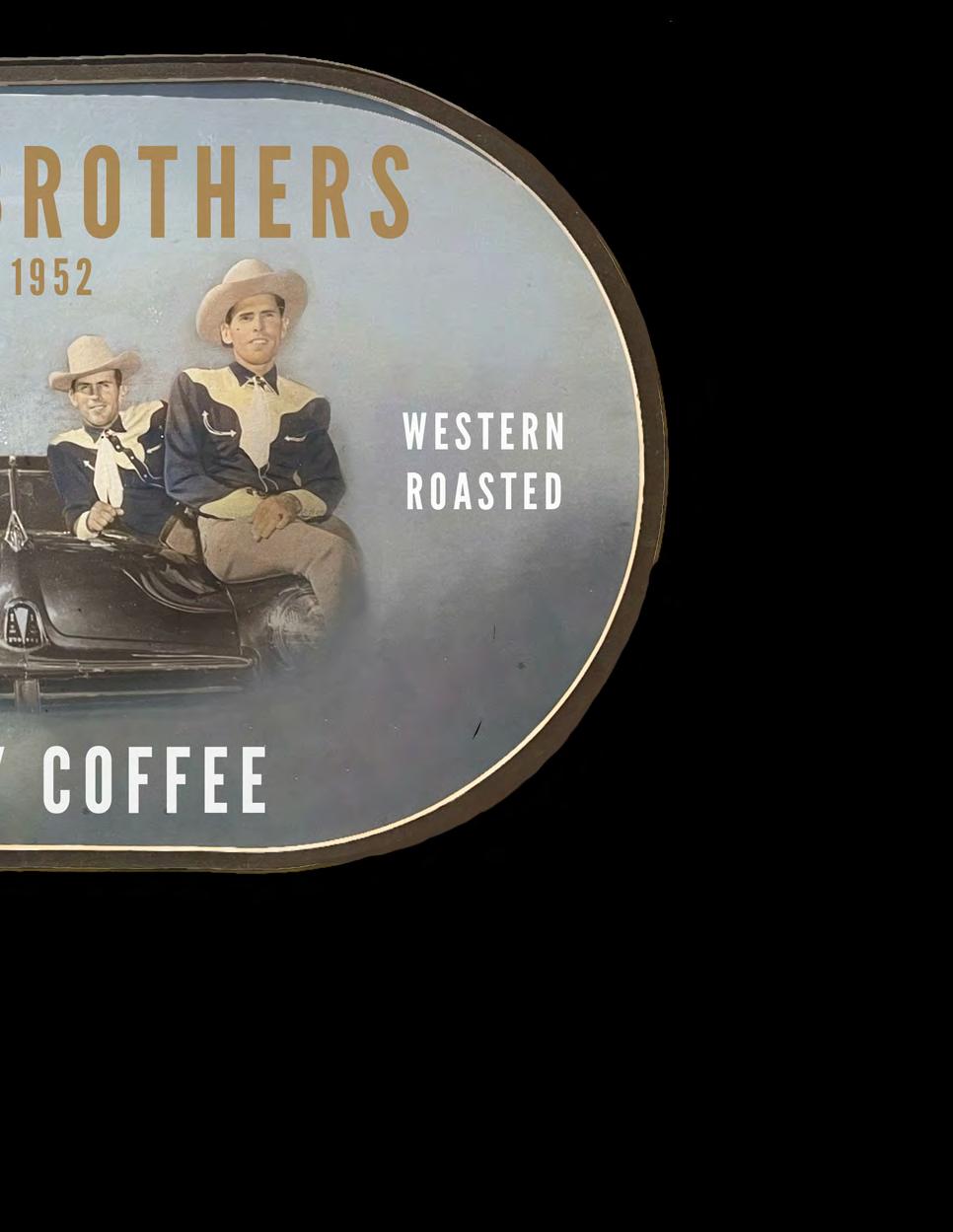
House, whose many songwriting credits include “This Is Me Missing You” and “Ain’t That Lonely Yet,” is still writing and maintains a busy tour schedule. You might see him appearing at the famed Bluebird Cafe in his hometown of Nashville. And when he sings, he often thinks of his dad and his uncles.
“They sang all the time. Any time they got together, they’d pour a cup of coffee and go through their kibitzing about life and what have you. And then they’d cut into a
13
four-part harmony. And so that was the first music I heard growing up as a kid. So, my House Brothers Cowboy Coffee is a tribute to my dad and uncles.”
James says he’s been consumed with music since the age of nine--so much so that he doesn’t have a hobby. He didn’t plan to become a coffee baron. Oddly, though, he was prepared for this new venture.
“I’m a coffee junkie. I try all kinds of coffee. This coffee is an incredible mixture from Brazil and Papua New Guinea. It’s got this hint of chocolate, but there’s a fruity edge to it. And I tasted more coffees than you can imagine leading up to this. It’s almost like tasting wine. They do this whole thing for you where you smell the beans, and they crunch it up, and you smell that, and then they make the coffee for you. So, I went through a lot of beans and a lot of roasters to find the right coffee.”
The coffee comes in bags or vintage cans decorated with photos of The House Brothers--the men who inspired James’s life work and this new enterprise. The coffee can be purchased online at housebrotherscoffee.com
“And it actually kind of keeps snowballing here,” James says. “One of the local co-ops is wanting to sell it. It’s in their store. And then there’s another little store in Dickson County that wants to do it. It’s exciting.”

James is also excited about the work he does twice a month with an organization called Songwriting with Soldiers. He’s among a core team of Nashville’s top songwriters who collaborate with veterans nationwide to help them share their experiences in song.
“That’s pure songwriting,” James says. “I see the immediate results, what it does for these men and women. There are about ten of us that work with the vets. It’s incredibly fulfilling watching and helping these vets, and these families heal. Just doing a little part, like helping them by taking their words and putting them to music, is extremely important to me at this point in my life.”
So, James is taking time to stop and smell the coffee after nearly 50 years of playing guitar (enough to require a recent successful operation to repair a wrist damaged by tendonitis).
“I’ve been lucky enough to kind of chase it all and have some success with music. And now, with the coffee thing, once a week, I get on the phone and say, ‘Hey, would you be interested in putting this in your store?’ And you know, if nothing else, we’ve made a really great coffee.
“And I’m still doing music. That hasn’t changed, but this is just something I just needed to do, and I felt like it would be a good tribute to Dad and the guys.”
14

15



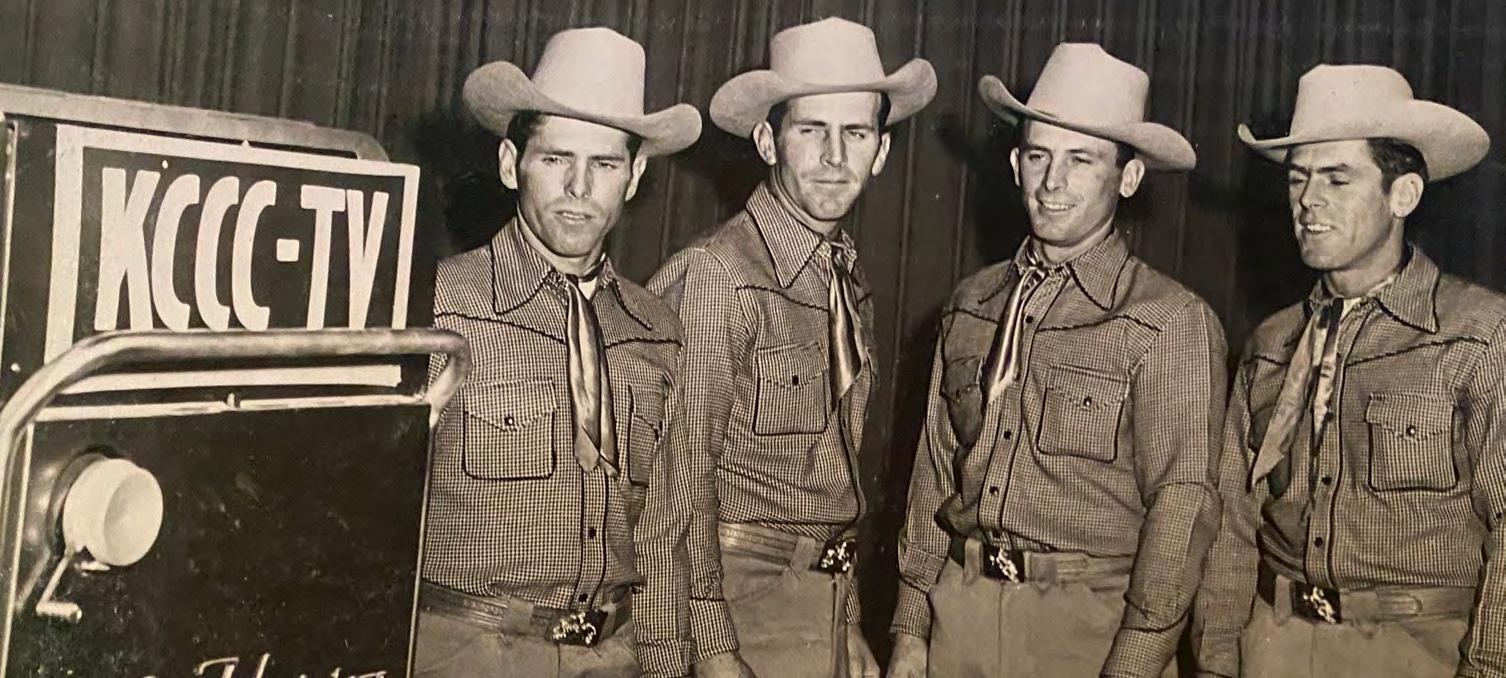
17
Brad Reid
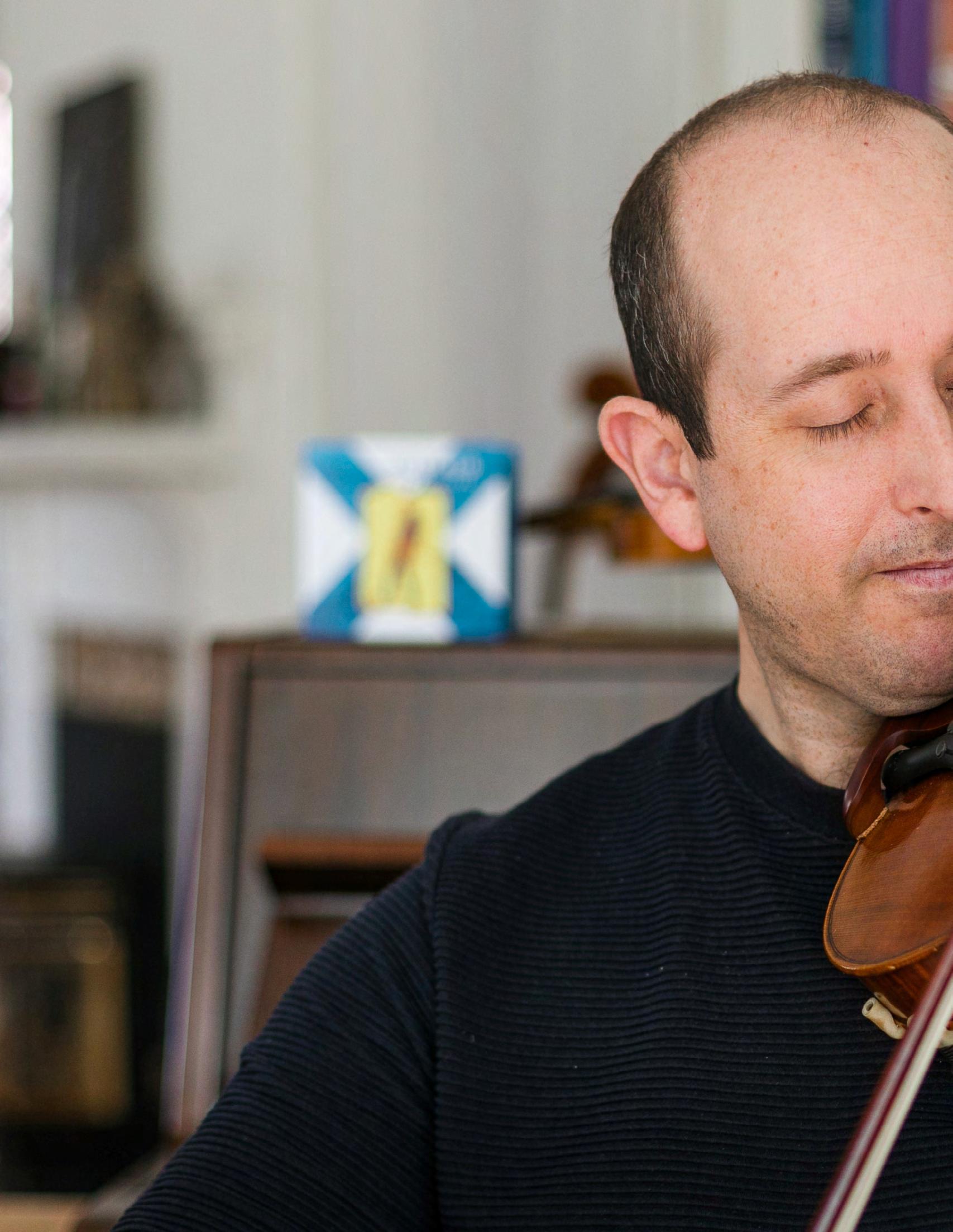 by Susan Marquez
by Susan Marquez
18
Brad Reid has something to say, and the fiddle is the instrument he feels he can best express it. The fiddle is a family tradition for Brad, whose late grandfather was a fiddle player on his mom’s side. “I grew up in the Halifax area (Lower Sackville) in Nova Scotia, but my mom’s side of the family comes from Cape Breton, which is where a lot of my musical influence comes from. My grandfather would play the fiddle, and my grandmother would sometimes accompany him on the piano, and she still does for me occasionally.”
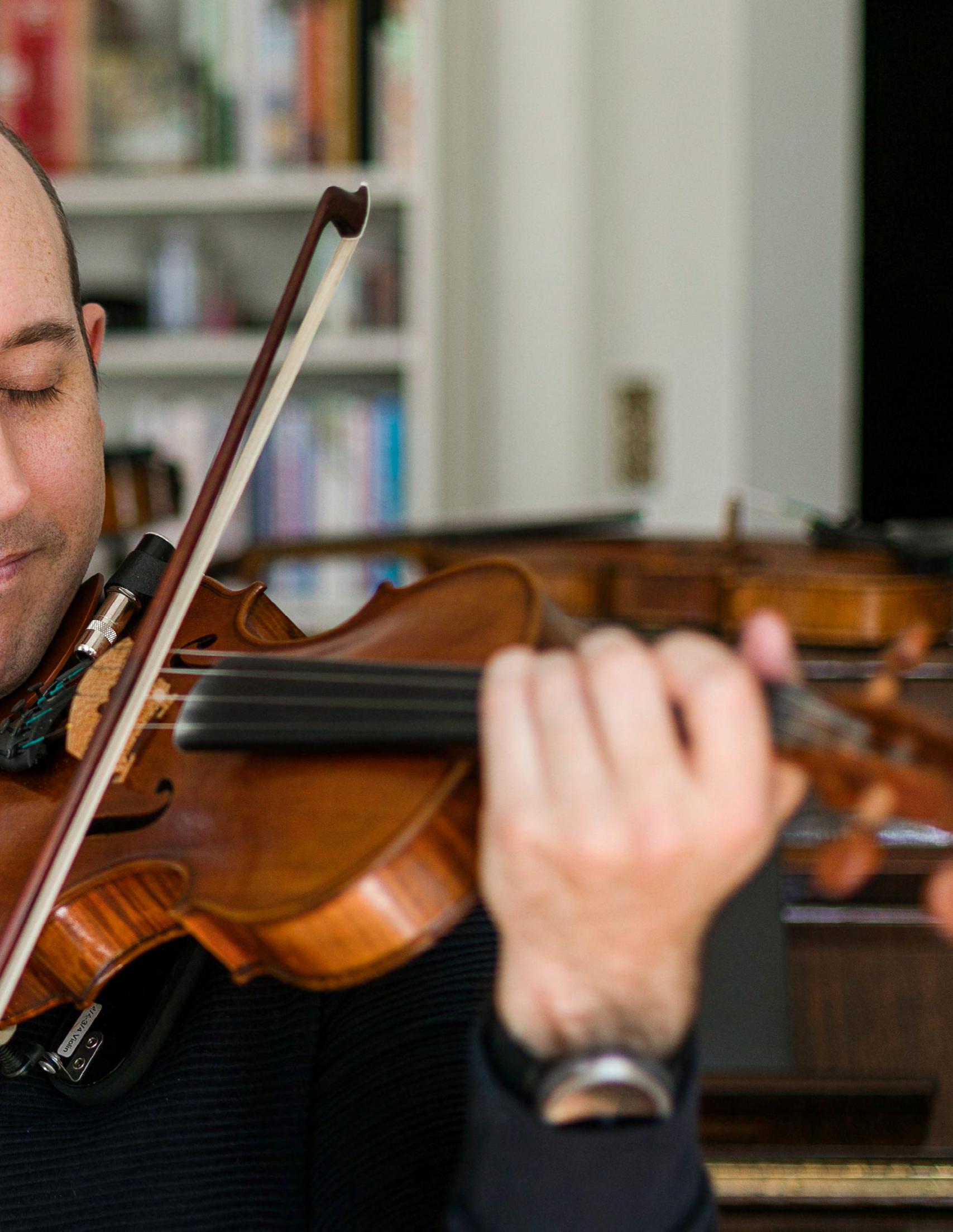
As a matter of fact, many members of Brad’s family had musical talent. “A few of my aunts play instruments and sing as well. I was always surrounded by music when I was growing up.” He got into music at eleven when he started playing saxophone in the school band. “I had a great teacher who came in before class so we could jam.” A turning point in his musical life was when Brad attended a fiddle festival in Cape Breton with his grandfather. “The festival was at the Gaelic College in St. Anne’s, and that’s the first time I remember seeing kids play fiddle. Until then, I thought only grandpas played. That’s what inspired me to play fiddle.”
After high school, Brad studied music at St. Francis Xavier University in Antigonish, Nova Scotia, two hours outside Halifax. “It’s the town where
19

20
my grandparents lived, and a lot of my family went to school there. It has always been known for having an excellent jazz program, which is what I did on saxophone. I also got into playing multiple woodwinds and just being a multi-instrumentalist in general. After university, I went to work on cruise ships playing saxophone, flute, and clarinet. I later added more instruments, and to this day, I work in the pit bands for musical theatre shows.”
Now known as a world-class fiddle player, Brad says he can’t put his finger on “why fiddle” exactly. “I guess I feel like it’s the instrument that I feel I have something to say on. When at St. Francis Xavier, I lived with my grandparents. In my fourth year there, my grandfather passed away, and shortly after that, I started to feel like I really wanted to carry on the fiddle tradition in our family. My cousin Heather also plays some fiddle, so I’m not alone.”
While he still enjoys playing other instruments, creatively and technically, Brad focuses on the fiddle. “I feel like everyone’s sound on the fiddle is so different, just like the person playing it. Maybe more so than other instruments. So, as I get closer and closer to getting the sound I want on the fiddle, I am showing the world more and more of myself.”
Brad says there is a great community around fiddle music, which is a bonus. “You can find sessions all around the world (in particular Irish music, which I have picked up some of) and play common repertoire with strangers who might not even speak the language. Thanks to music, you’re no longer strangers.”
Brad has recorded three albums to date. “The Conundrum (2008) was kind of ‘getting my feet wet’ kind of experience. I knew I wanted to start recording, but I was still figuring out my own style and sound.” Next came NEW Scotland because Brad was on tour with Cirque du Soleil in 2019. “It was an ice show, and I played clarinet while skating. I also played saxophone and guitar. I realized that I still had that calling to play and be creative on the fiddle, so I left the Cirque tour and came home to write and record NEW Scotland, inspired by the last few years of my life.”

His new album, The Bridge, picks up where NEW Scotland left off. “The album features all original music, but with the idea of connecting the old-style tradition with modern-day pop styles. I wanted to try and connect with more people in general, not just react to the die-hard fiddle fans. I like meeting and connecting with people, so incorporating more styles into the album was a way to do that.”
The Bridge is a collaborative effort for Brad, who had various musicians with different styles of music joining him for some of the songs on the album. “Part of why I enjoy collaboration is that you get to hang out with the people you’re working with. It’s social. It’s a way of sharing what each other has and coming up with some music that wouldn’t have happened otherwise. Most of the time, I will have the full idea of what I’m going for, and then will let the other person make it their own by adding their input.”
21
The album is a blend of traditional music with modern pop. “I hope it makes this music more approachable, not so it will sell more (though that would be nice, of course) but just to actually connect with more people. I also enjoy pop music myself and grew up on it, so I have enjoyed feeling unrestrained and making music in any way I feel. I think musicians strive to be more and more themselves when playing, and that’s what sets them apart.”

Brad’s music has been recognized with nominations for some impressive awards. In 2021 He was the Nova Scotia Music Award nominee for Folk Recording of the Year and for Roots/Traditional Recording of the Year in 2021 and 2022. While award nominations play a role in the industry, and Brad admits they can be helpful, he says that’s not why he makes music. “But getting the nominations, or maybe someday an award, helps me to keep making the music and to keep expanding.”
Even when he is at home, Brad is surrounded by music. “My partner Catherine is a classical cellist. We sometimes play together, but for the most part, each do our own thing musically.” While he loves both dogs and kids, he has neither. “But I do like to cook, I love coffee, and these days I’m going through a smoothie recipe book I found and loving my daily smoothie! I’ve always loved traveling, so I hope to keep that up as well. I also love walking with my headphones and listening to podcasts or music - pop, fiddle, classical, jazz, whatever.”
The future holds endless possibilities for Brad. “I would like to work with a producer to create a bigger sound on an album, whether it’s electronic or acoustic in nature. I’m also still writing new tunes, so maybe a really traditional-style album of fiddle, piano, and guitar. I’m also putting together a tune book and developing some merch items to be available on my website. And I am working on a podcast that would be featuring trad musicians.”

22


23
Brian Duffy & The Tuesday Mountain Boys
The Tuesday Mountain Boys didn’t set out to form a band. What started as a regular Tuesday night porch jam session at Brian Duffy’s Salem, New Jersey home evolved into a CD project, and before they knew it, The Tuesday Mountain Boys were a bona fide bluegrass band.
“It began with my friend, Troy Spencer from Ladenburg, Pennsylvania, coming over on Tuesday nights back in the early 1990s,” says Brian. “We played on my back porch. Troy played banjo, I played guitar or mandolin, and we both sang.” Troy was a seasoned musician with about 15 years on Brian. “He wrote the song ’40 Years,” says Brian. The song, first recorded by Bob Paisley and The Southern Grass, was later recorded by Aubrey Haynie and Danny Paisley. “I learned timing and tradition from Troy.”
Troy’s son, Jeffrey Spencer,
by Susan Marquez
who lived in Newark, NJ, joined them on the porch, playing rhythm guitar, followed by Harold “Pep” Peploe of Carneys Point, NJ, on upright bass. “We all had similar taste in music,” says
Brian. “I don’t remember that we intended to form a band; we just enjoyed playing and singing together.”

Occasionally bluegrass loving friends would stop in to listen. “I think one of them may have recommended us to someone who needed a band for an occasion. We needed a name, so it became The Tuesday Mountain Boys. We were soon
joined by our friend Warren Purdy of Pocopson, PA, who, with his brother Andy, had years earlier formed a gospel bluegrass band, The King’s Countrymen. Warren was an exceptional lead guitarist and singer.” Sadly, Troy passed away, and the band stopped playing for a while. “We missed playing together, and several months after Troy passed away, we began to play again when Carvel Boyd, who lived in Newark, Delaware, started playing banjo with us.”
By 2001, the band had been playing together long enough to cut a CD. “We all chipped in together to fund a CD project,” Brian says. “We selected our material and did a single six-hour recording session at Bias Sound in Springfield, Virginia. We spent another half
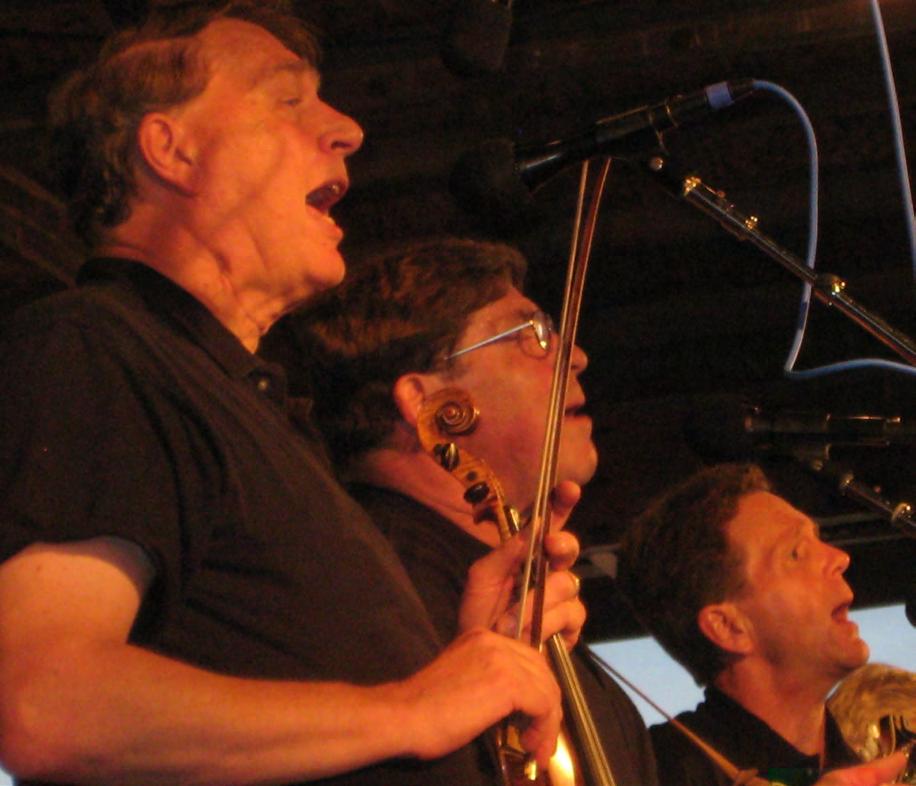
24
day mixing and mastering.” The CD, The Old Home, was released in time for the band’s appearance at the Delaware Valley Bluegrass Festival 2001. At that time, they were joined by Ted Lawhorn of Stuart’s Draft, Virginia, on fiddle.
Like any other band, the lineup evolved. When Warren Purdy left the band in 2003, Don Breeze joined
parties. “We played funerals, picnics, fundraisers, you name it,” laughs Brian. “We even played for a few weddings and for the inauguration of the Chief Justice of the Delaware Supreme Court.”
The band lost another member when Pep Peploe passed away. Saddened by his loss, the band took another break. They were later
due to Covid travel restrictions. We were fortunate to have Sarah Williams Larsen from Annapolis, Maryland, step in at the last moment to help us out with her wonderful fiddle playing and stage presence.”
The Tuesday Mountain Boys have had some original tunes over the years, including those above “40 Years” by Troy Spencer. Troy also
The Tuesday Mountain Boys on fiddle and vocals. “At that point, we were only playing around eight to ten gigs a year since we all had day jobs as well.” Their gigs included concerts at various bluegrass organizations, Longwood Gardens (in Delaware), summer concert series at State Parks, nearby communities, and private
joined by Leon Werkheiser of Pennsville, NJ, on bass, followed by multi-instrumentalist and singer Jeff Blevins of Parkville, PA.
“During our appearance at Delaware Valley Bluegrass Festival in 2022, we were down a fiddle player,” Brian recalls. “Don Breeze was unable to get in from Canada
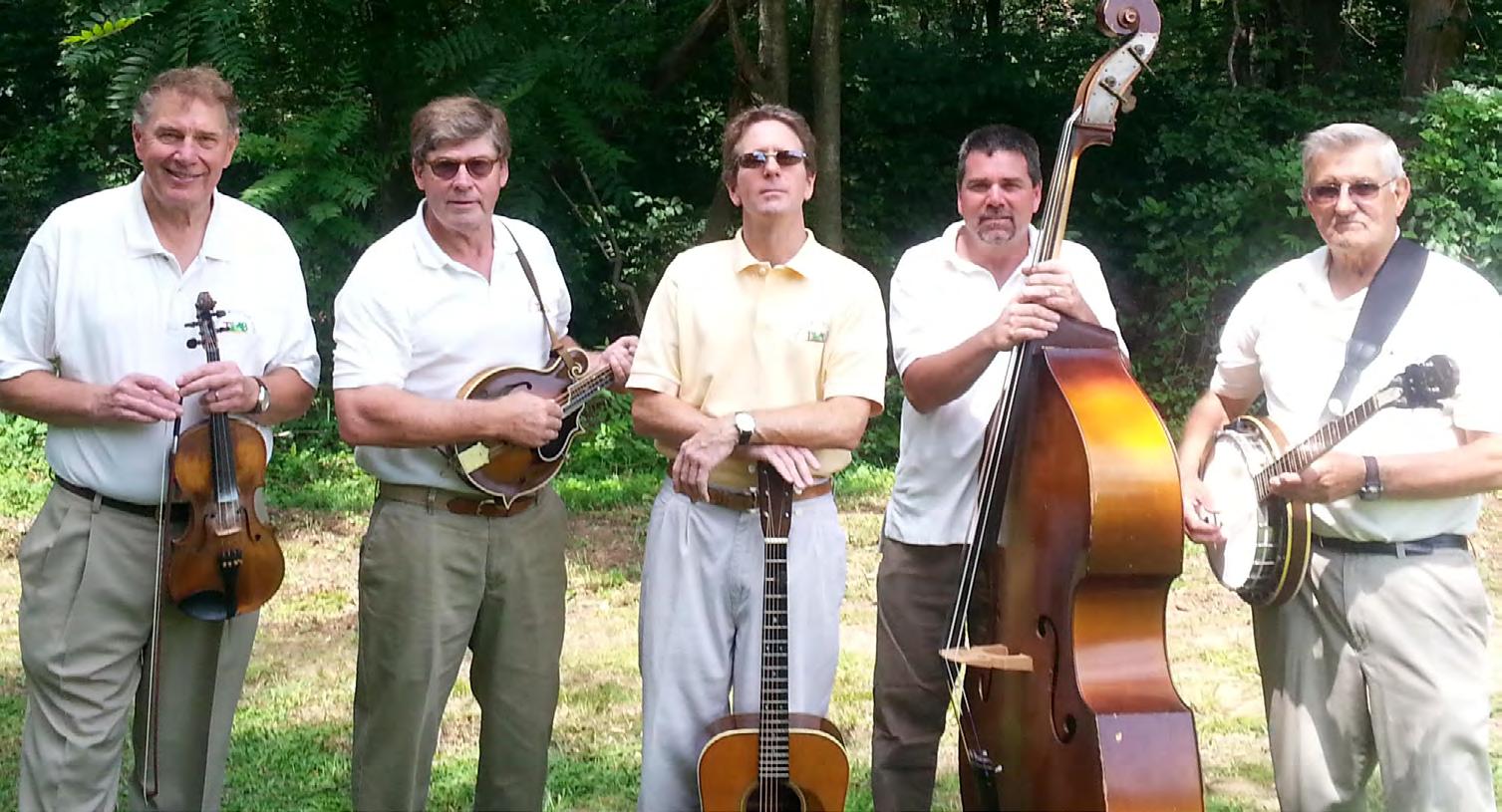
wrote “Cardboard Mansion” after seeing a news report of homeless people sleeping on cardboard boxes over subway grates to keep warm. Carvel Boyd wrote “Stepping it Up” and “Southern Touch.” Brian wrote “I Won’t Be Coming Back,” “Ironwood,” “Frost on the Meadow,” and “Parker Brown,” a song written in the early

25
1990s inspired by a man who was born enslaved and raised in Brian’s childhood home.

As happened with many bands, Covid put everything
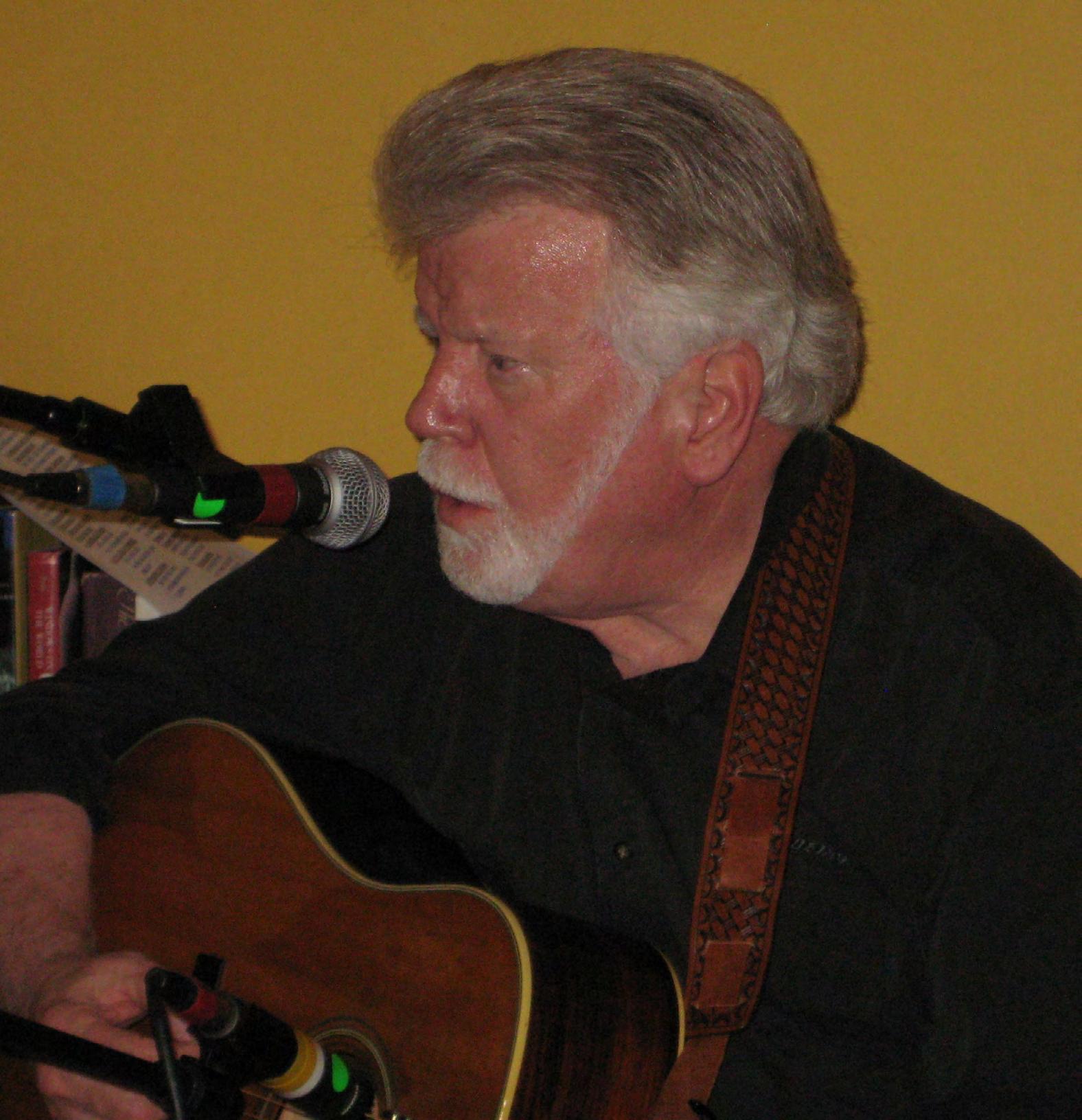
on “hold” for The Tuesday Mountain Boys. “We have not yet resumed our previous level of activity,” says Brian. We still enjoy every chance we get to just jam together for old times’ sake.
The truth of the matter is that we are in it for the joy of playing the music, for meeting new people and for the comradery.”
26

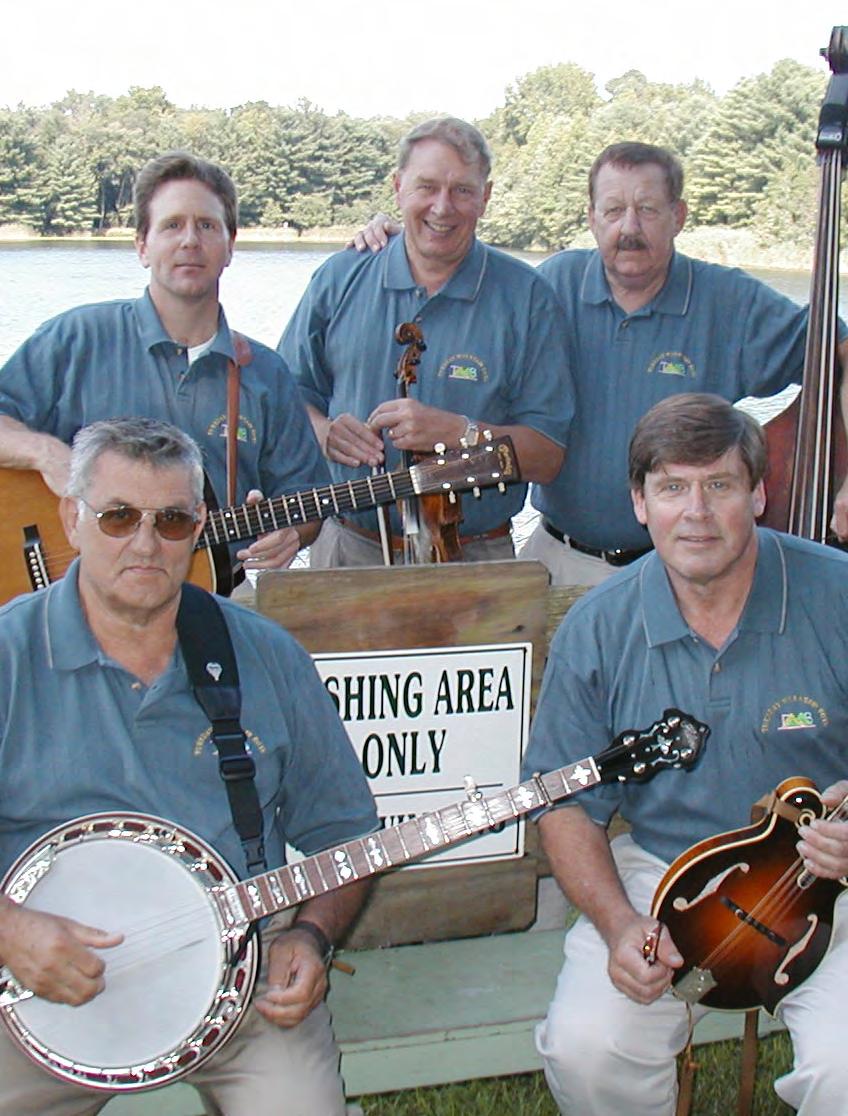
27
Jussi Syren & The Groundbreakers
by Kara Martinez Bachman
Finland isn’t often connected to American folk genres, but according to Finnish musician Jussi Syren, bluegrass is alive and well in his home country and across parts of Europe.
“The first bluegrass type recordings were made in Finland in the 60s, including five-string banjo,” Syren explained. “The 60s folk boom got some people interested in bluegrass.”
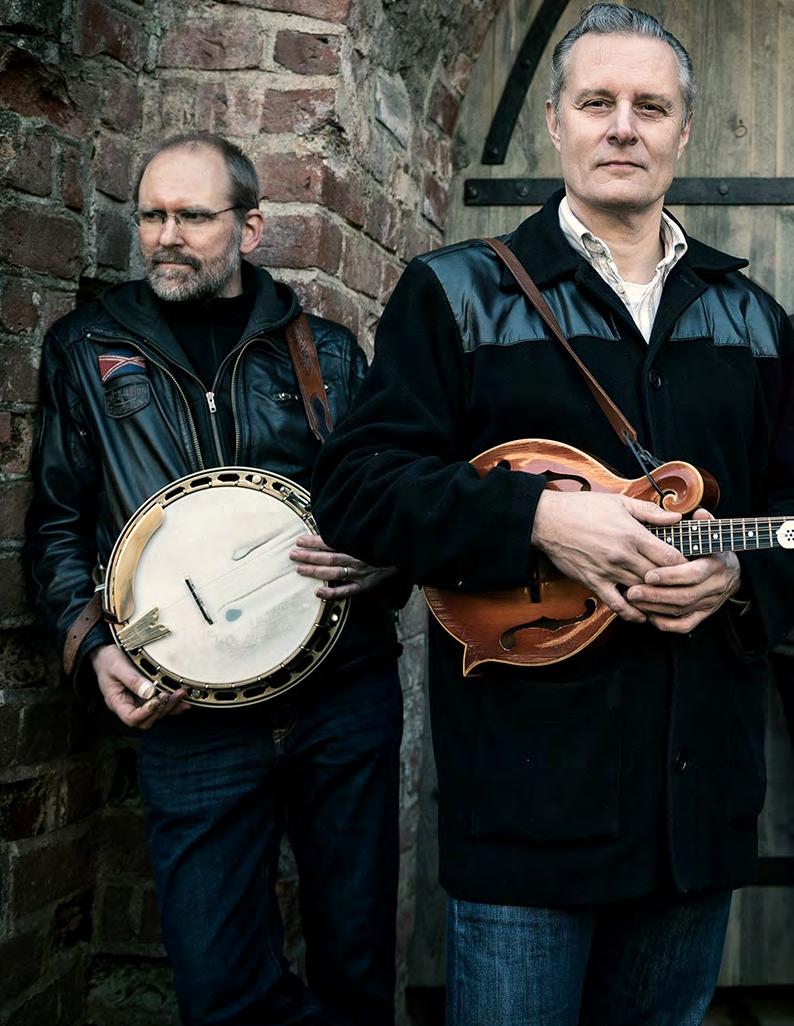
He said the first “real bluegrass bands” emerged in the 1970s. While it didn’t make a huge splash, the music has been around in some quarters for decades.
“As you might expect, it’s not Top 10 stuff here, but is a pretty well-known genre anyhow,” he said. “Today, there are many active groups playing in Finland, and the genre is in good hands.”
28
Syren
Groundbreakers
He said there’s “lots” of bluegrass to be found in the neighboring nation of Sweden, as well as “a good scene” in central and southern Europe and the UK.
“Bluegrass and country music, in general, have strong European roots,” he said, “and I guess that’s why it resonates with us. Songs like ‘Knoxville Girl,’ ‘Down in the Willow Garden,’ or ‘Billy in the Low Ground’ originate in Europe.”
Syren and his band – The Groundbreakers – have delivered traditional bluegrass for fans since 1995. They’ve performed in eight European countries and nine U.S. states, including appearances at various events such as the Gettysburg Bluegrass Festival and the Tennessee Homecoming Festival. They also were a showcase act for the 2020 IBMA convention. In 2020, Syren said the band’s “Bluegrass Christmas” recording was awarded “Christmas Recording of the Year” by Finnish radio broadcasters, causing them to tour heavily after that release.
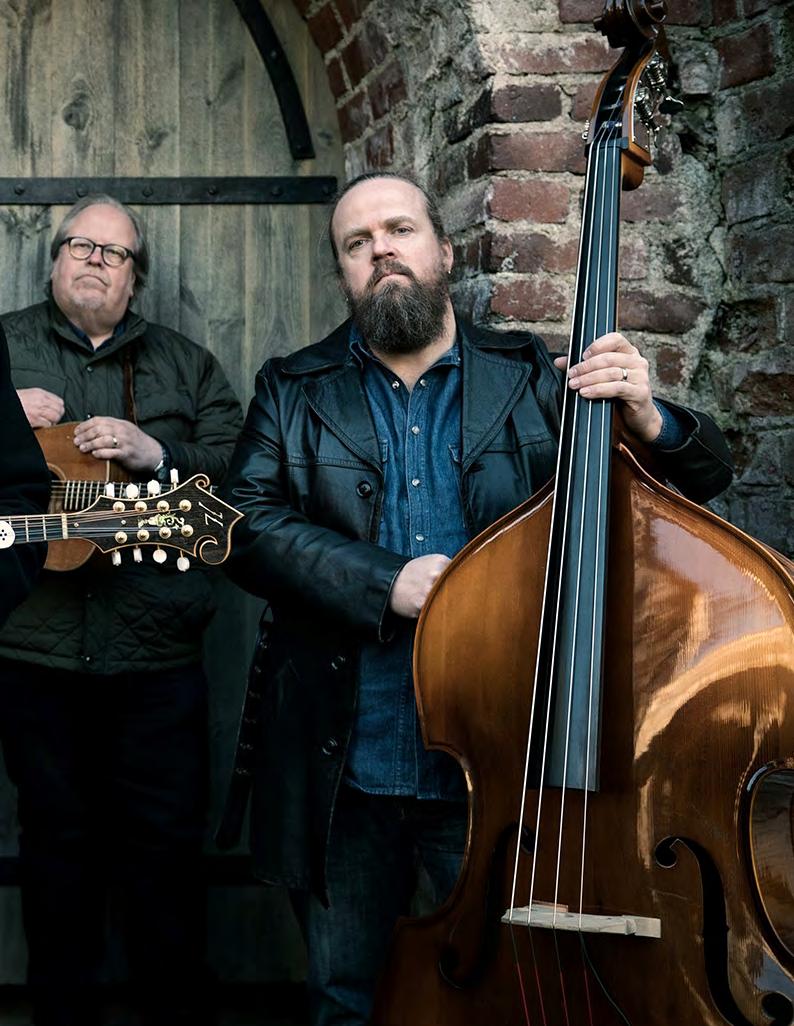
29
“I am currently planning a Finland tour with The Truffle Valley Boys, a great harddriving bluegrass group from Italy. It will take place in early 2024,” he said.
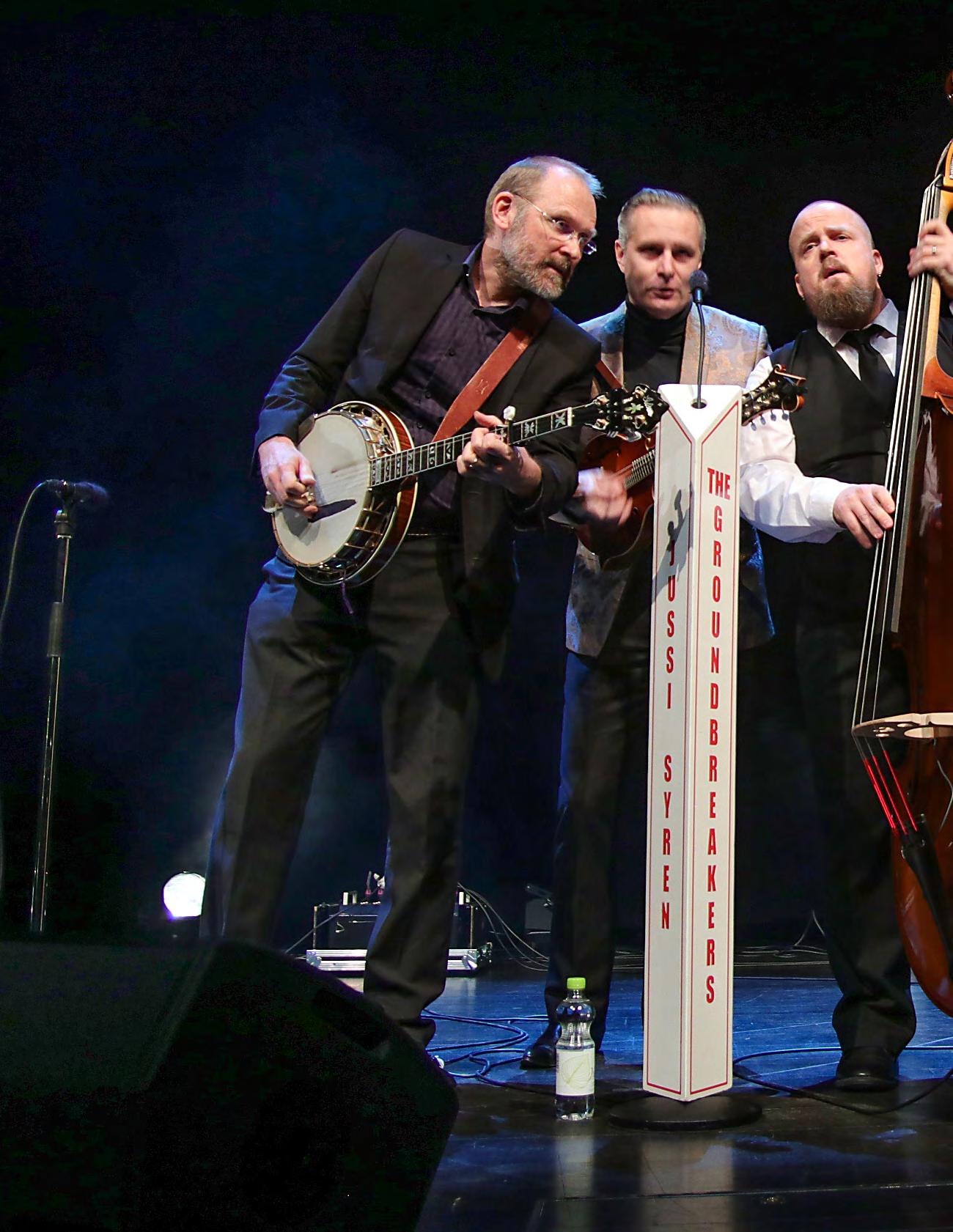
Right now, Jussi Syren and the Groundbreakers are actively promoting their 13th record, “Bluegrass Voice,” a June release from Bluelight Records.
“Half of the songs are written by yours truly, and one by the banjo player Tauri Oksala,” Syren said. The rest are covers, including material such as Syren’s rendition of the Warner Mack song, “Sittin’ in an All Night Cafe,” and the Cat Stevens number, “Morning Has Broken,” which he said, “is actually an old Scottish hymn.”
“We make all our recordings live…no overdubs or corrections,” he said. “This way, we get the right kind of drive. Exceptions to that are the guests who made their cuts at their home studio and sent them over. We had the privilege to have Grammywinning fiddler Michael Cleveland on three cuts. Laraine Kaizer played fiddle on one cut. We had three guest vocalists: My kids Veera and Aarne and a famous Finnish pop singer, Anneli Mattila.”
“We try to keep things as natural as possible,” he said. “Four of the songs were recorded on the first take.”
The group consists of Syren (mandolin, lead, and harmony vocals); Tauri Oksala (five-string banjo and harmony vocals); J.P. Putkonen (guitar and harmony vocals); and Tero Mäenpää (upright bass and harmony vocals).
Although the Jussi Syren and the Groundbreakers discography is quite lengthy, it
30

31

32
sounds as if each project is carefully crafted.
Since “Bluegrass Voice” was just released, Syren said it will take “at least a couple of years to release the next one.” So, fans should savor and enjoy this moment of new music.
This musician has been into stuff like this since he was a little kid.
“My relatives listened to country and gospel and other American genres, and I got to know roots music as a child,” he reminisced. “I learned to play guitar in a gospel choir. In my early teens, I started playing rockabilly and switched to bluegrass in my late teens.” He explained that there were a few bluegrass groups in Finland in the 70s and 80s, so it was not completely unfamiliar to Finnish audiences. “In the early 80s, when I got to play the first time in a real bluegrass group,” he continued, “it felt amazing. Like stepping into a whole new world.”
He called his choice of instrument a “practical thing.”
“I had played guitar before that and knew you could always have a guitar man from somewhere and a bass man, too. So, I decided to choose either a mandolin or a fivestring banjo. I ended up with mandolin because it was easier to sing with.”
From there, the rest is history. A fellow mandolin player described well the exact thing that attracts him to making these sounds.
“Bill Monroe once said, ‘Bluegrass music has a drive no other music has.’ I guess it’s the drive and intensity that got me hooked.”
33
by Kara Martinez Bachman
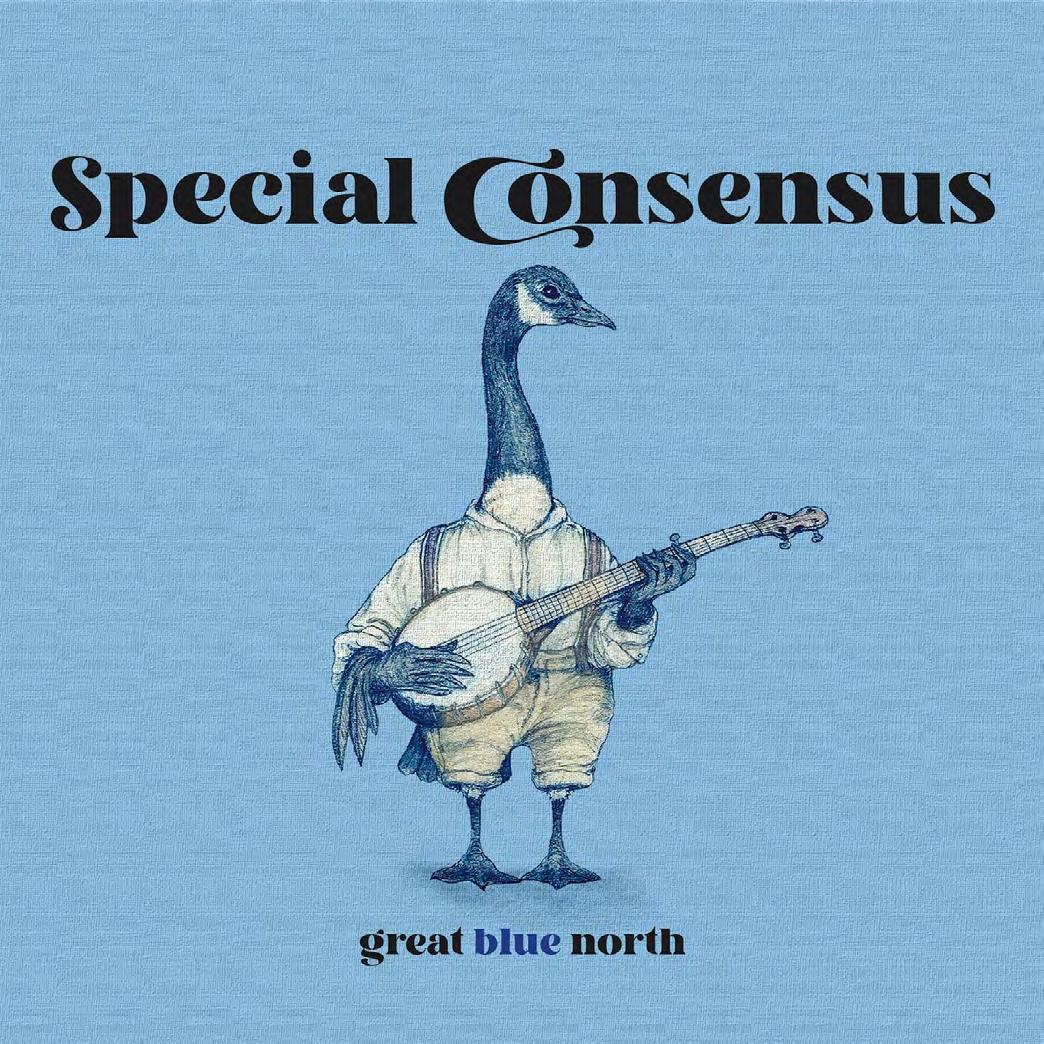

34
Grammy Award-nominated group The Special Consensus has toured in Canada, and many of their fans hail from up north. When deciding on a new “theme” project, acknowledging the contributions of Canadian artists for the band’s next album simply made sense.
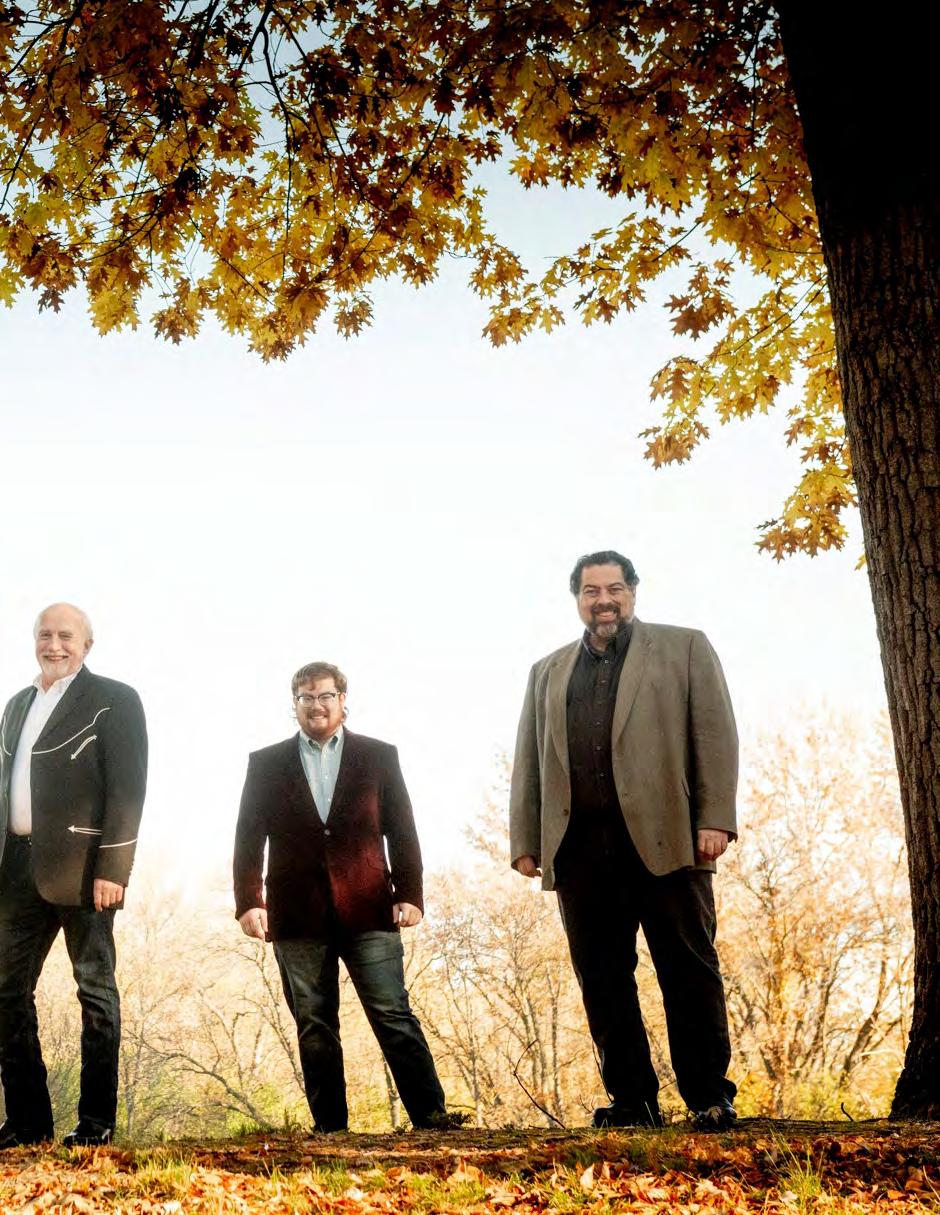
That album, Great Blue North, was released this spring. It pays homage to the music of Canada and features a roster of solid, well-known contributing artists. “Special C” guitarist Greg Blake described how the project came together.
“Our most recent project was a dedication to the home of Special C – Chicago – and an acknowledgment of its formative influence, not only on the band but also on country and bluegrass music itself,” Blake explained. “Sometimes a project sticking so closely to a unified theme doesn’t do so well,” he said, but “Chicago Barn Dance” ended up receiving “a couple of IBMA awards and a Grammy nomination.”
In spring 2022, the band also released a song called “Blackbird,” penned by singersongwriter and – according to Blake, “guitarist extraordinaire” – J.P. Cormier.
“When we released ‘Blackbird,’ and it was also well received, we began to wonder if perhaps another tightly themed project might be in order.” Since they’d built a fan
35
base in Canada, Blake said they “decided to research the vast catalog of songs and tunes penned by Canadian artists and discovered a direction for our new album.”

“It was difficult to narrow the field of 100-plus songs that we dearly loved down to just nine more to add to ‘Blackbird,’” Blake explained. They did eventually whittle it down and selected music they felt best represented “the ‘sound’ that Special C has honed over the course of its existence” as well as pieces that “would properly introduce the new band members – myself and ‘mando monster’ Michael Prewitt – to the loyal fans and the bluegrass general public.”
Last but certainly not least, the “theme” aspect had to be there. Each number must reflect the Canadian scene – or culture – in some way. Blake said they wanted a track list that “would resonate with our Canadian fans…numbers that would show
36
appreciation to – and for – their musical heritage and culture, as well as tip the hat to newer, yet worthy artists.”
Blake said the band initially contacted friends they had worked with for possible collaborations, including musicians such as Rob Ickes, Dale Ann Bradley, and Amanda Smith.
“But when we knew of the direction that we wanted to take, we immediately thought of bluegrass, folk and roots music friends that we had come to know and love during our Canadian adventures,” he said. “Canada is rich with extraordinary vocalists and instrumentalists.”
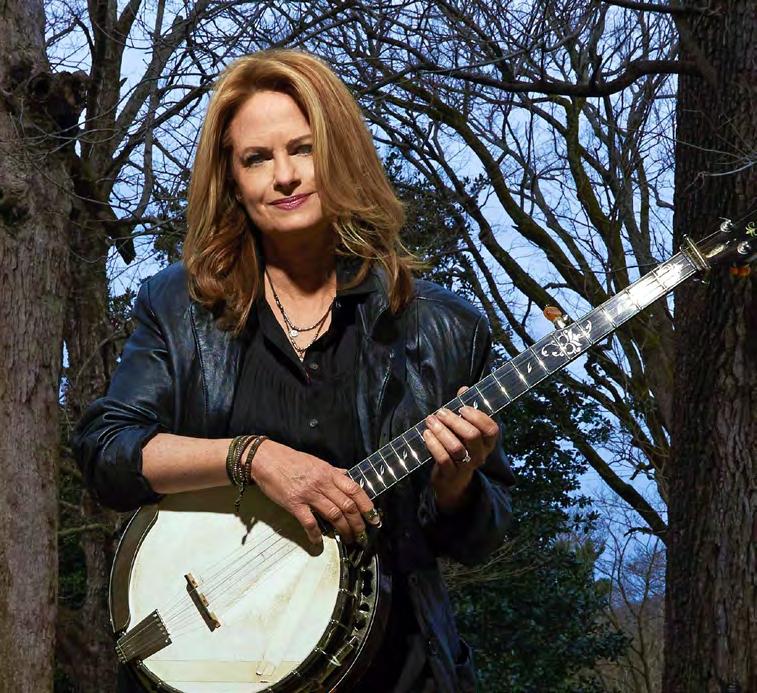
Great Blue North includes ten tracks: “nine songs written and originally performed by

37
Canadian authors, and one medley of two culturally native tunes.”
Featured guest artists include John Reischman, Trisha Gagnon and Patrick Sauber (The Jaybird Trio), Claire Lynch, Darol Anger, Pharis and Jason Romero, Dale Ann Bradley, April Verch, Ray Legere, Amanda Smith, John Showman, Leonard Podolak, Rob Ickes and Alison Brown.
The current lineup of The Special Consensus includes Greg Cahill on banjo; Dan Eubanks with his bass; Greg Blake, who brings the guitar; and Michael Prewitt, playing the mandolin.

“We recorded all ten tracks at Compass Records in Nashville, with Alison Brown producing,” Blake said. “All Canadian guest artists recorded their portions in various Canadian studios.”
The relationship between the band and Alison Brown is long-lasting. She’s worked closely with the band leader and the other “Greg” in the band – Greg Cahill – on many projects.
“All of us have great respect for each other as artists and good people, and we truly
38
enjoy making music together,” Cahill said. “We are on the same page for growing the Special C sound through musical performance, stage presentation and song selection. I also must sing the praises of our outstanding producer Alison Brown, who continually helps us grow our band sound as well as to grow individually as musicians.”
Brown expressed a similar sentiment about these collaborations.
“I’ve produced Special C’s last five records, as well as the current record,” she said. “I was the producer and arranger of the project.” She was also a guest musician on a couple of tracks, including “Pretty Kate” and “Rabbit.”
“I don’t know of a greater bunch of guys than the Special C boys, and I think the world of Greg [Cahill] for his leadership and work ethic as well as for everything he’s done for bluegrass music,” she said.
“With six records under our belts together, these guys really feel like family to me.”
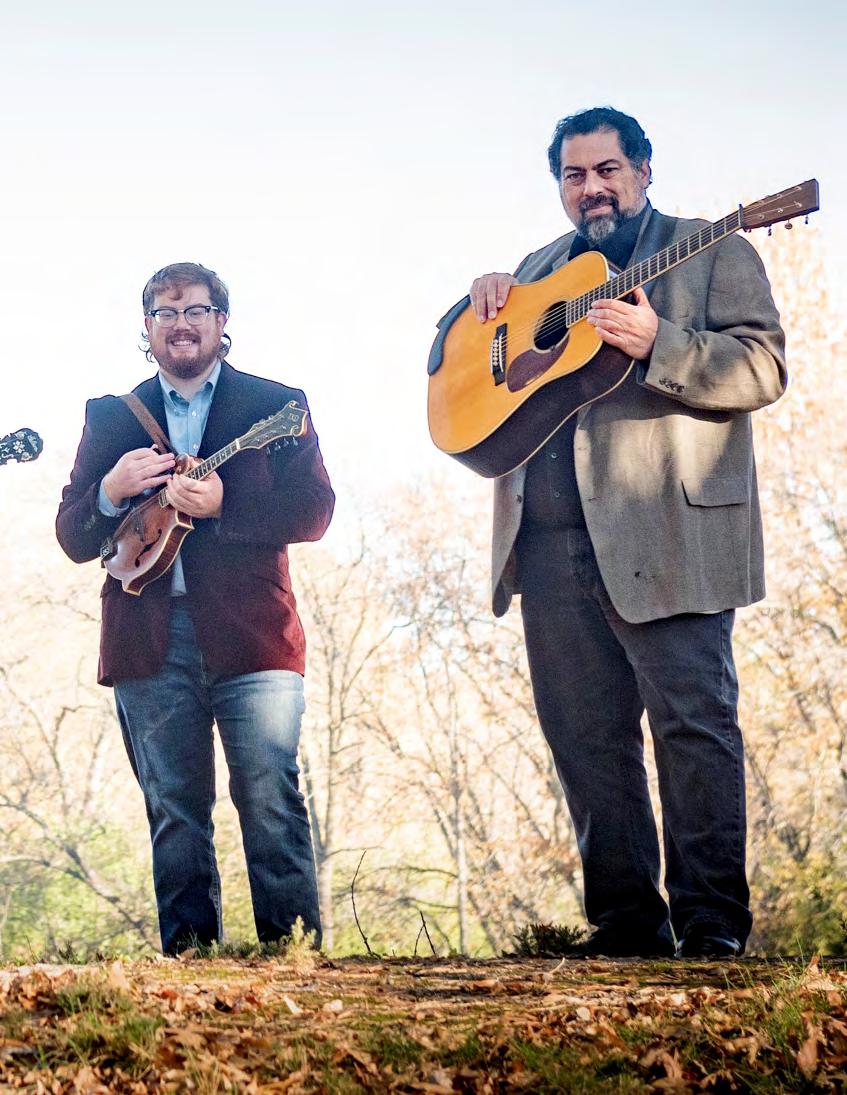
39
The Arcadian

40
by Kara Martinez Bachman

Arcadian Wild
41
Nashville-based alt-folk/bluegrass trio The Arcadian Wild has received over 50 million Spotify streams from over 325,000 monthly listeners. They’ve landed high on the charts multiple times, including with the 2021 record Principium, which reached the #3 slot on the Billboard Bluegrass Chart.
They recently invited listeners home again with the release of their newest album, Welcome. According to these musicians, it’s not just a collection of songs; it’s an invitation to pull up a chair and partake in a type of musical generosity.
“The idea behind the record is very wrapped up in hospitality,” explained The Arcadian Wild mandolinist and singer, Lincoln Mick. When they started, they were essentially gigging in “backyards and living rooms.” Over time, that experience gave the band an appreciation for more intimate settings and, according to Mick, helped them to practice learning to really “connect.”
Eventually, they branched out and, of course, started to perform in more public settings. The idea of “hospitality” stuck around and still informs the band’s approach today.
“I think all artists have this unique opportunity to become hosts in someone else’s house,” Mick explained. “When people were sharing their spaces with us, we had a profound sense of gratitude and sense of wanting to steward that well. Hopefully, they walk away at the end of the night feeling nourished by the table we set.”
With a sound that melds chamber folk and progressive bluegrass styles, these performers bend genre boundaries and bring a stamp of both musicianship and openness to their work. There are some interesting influences in the bandmates’ backgrounds.
“Alt-rock and Christian pop-punk…that was kind of our roots,” Mick said. “We just kinda gravitated to bluegrass and folk.” He added, “We’re still kinda on the edge of bluegrass. Kind of adjacent.”
They began recording Welcome in late January last year, and the 12-track recording dropped in July. Early single releases such as “Dopamine,” “Corner,” “Lara,” and “Shoulders” set up the record for a promising start.

42

43
“I feel like this is the best momentum we’ve had at the beginning of an album cycle,” Mick said just before the record’s release. By all indications, he feels great about the project and everyone involved. “The best people have come into our orbit,” he said. “We have to give so much credit to the people surrounding us.”
Late summer and early fall involved quite a bit of touring to support the record, including a west coast tour in September and an August appearance at the Grand Ole Opry.
“I think since we’ve been getting back to work after the pandemic, it’s been refreshing to get back on the road and reconnect with audiences,” he added.
The other two-thirds of the trio include guitarist and singer Isaac Horn and fiddler Bailey Warren.
“Isaac, the guitarist – and I – we’re the primary songwriters for the record,” Mick said, explaining that they all played a vital role in the process, however, including the other creatives who joined the trio in the studio. “It’s nice to see everybody’s fingerprints

44
come out in every song.” He laughed. “We spent a lot of time lovingly fussing over all of it.”

Welcome was approached from the angle of recording everything as “live” as possible to reflect the “organic” feel of the band’s concerts. The trio was joined by double bassist Erik Coveney, who has performed with the likes of Sierra Hull and Dave Barnes. Engineering was by Logan Matheny, who has worked with outfits such as Colony House and Hiss Golden Messenger. It was mixed by Shani Gandhi, whose credits include work by Sarah Jarosz and Sierra Hull.
When asked what he likes best about bluegrass and its people, Mick didn’t delay his response. He knew right away how to describe the appeal.
“I think one of the things I really appreciate is the kind of baked-in honesty,” he explained. “There is no artifice to hide behind… you just have to be up-front and direct.”
45

46

47

48
by Susan Marquez
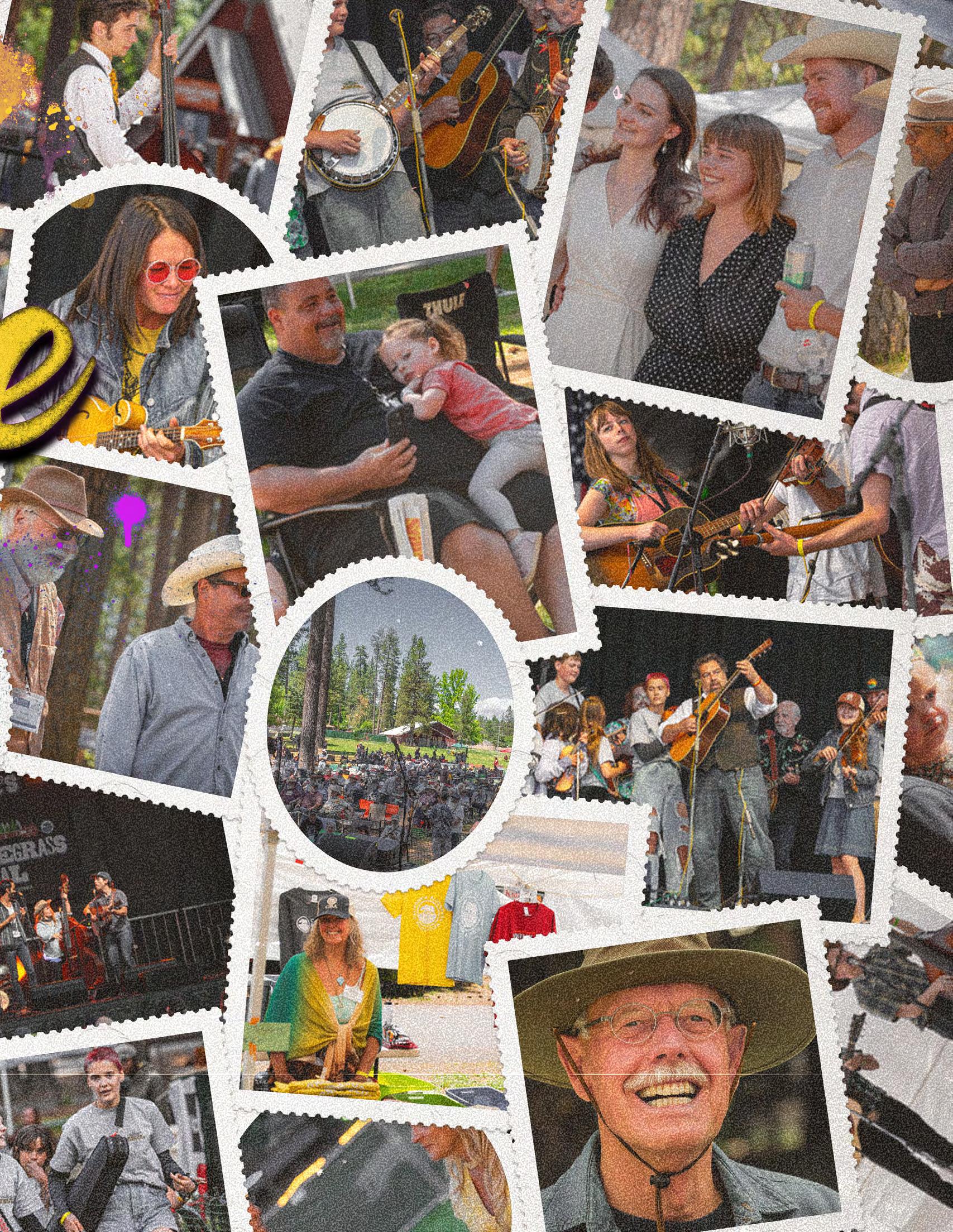
49
Bob Free pauses, raises his camera, and then snaps a picture of the artists on stage at the California Bluegrass Association’s Grass Valley Festival. It’s a scene he’ll repeat as many as 10,000 times during the four-day event.
Free’s passion for photography now gives him access to some of the most famous names in bluegrass and other music genres as he’s asked to document all sorts of festivals and events near his home in Grass Valley, California.

“The CBA Father’s Day Festival has been going on for, I think, 46 years, and I’ve been going for about 40,” Free recalls. “I had dabbled a little bit with a point-and-shoot camera, taking some photos, and one of the people on the CBA team saw some of my photos and asked me to be on the team a couple of years ago.”
Free’s fascination with photography goes back to when he was around eleven and began taking pictures with film cameras. He says he never got serious about it until he retired from the hydroelectric industry. “Now I’m retired, and it’s pretty much my full-time avocation.”
His love of bluegrass began many years ago as well.
“It was 1976. I went to this little club called the Inn of The Beginning in Cotati, California, down in the Bay Area, and I saw the original incarnation of the David Grisman Quintet with Tony Rice and Darol Anger. And I was about 10 feet in front of Tony as he played Clarence White’s D28 guitar, and I was just immensely hooked. And I have been ever since.”
While many of us appreciate the sound of bluegrass, Free also relishes the visuals associated with the music. Forty-seven years after his first exposure to bluegrass music, the sights it generates still fascinate him.
“It’s the interplay

between the artists and their expressions and how there’s an unsaid meter between them, and they just know when to take a break,” he explains. “And you also see it just in their body posture, or in a subtle foot tap or a motion with the neck of an instrument or something. I just love watching that.”
Free’s accessibility to the musicians he shoots is one reason his photos are so compelling (his work has appeared in The Bluegrass Standard). And to get access, he first must establish rapport with them.
“You can’t just go up and stuff the camera in their face and start shooting,” he explains. “When you’re backstage--especially if you help them load in--you want to befriend not
50
only the artists but the tour manager. Just let them know that you have a professional air and you’re not going to get in the way. Then you ask them what they want or don’t want and be willing to work with them. Just melt away if that’s what they want. But sometimes they ask you to go on stage and take pictures from behind them.
“I also always befriend the sound guy so I can stand wherever the tech booth or the sound platform is. I can get a little bit up and use a long lens and get a full-length stage-width shot.”
Free’s volunteering keeps him busy, shooting for many non-profits and arts organizations. He also loves nature photography and is passionate about hummingbirds. He’s captured scores of breathtaking images of the fascinating creatures.
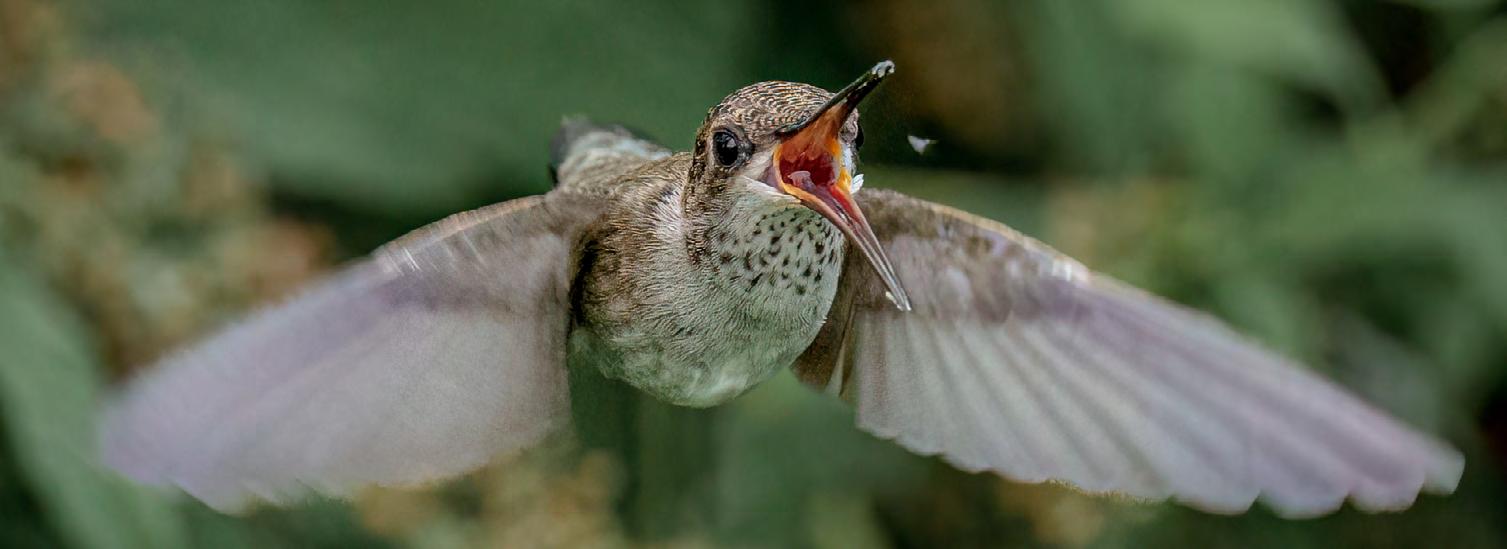
He’s also delighted to have documented in photos many of the young artists who have grown up in the California Bluegrass Association.
“There’s The Gooding kids that The Bluegrass Standard did an article on recently and AJ Lee. I’ve seen Molly Tuttle grow up. The Watkins Family Hour (siblings Sara and Sean Watkins) was here not long ago on my stage, and I got to shoot them. That was pretty cool because I watched them grow up, too.”
Free uses professional equipment and expensive lenses. But he has advice for those who might be shooting with their phones. First, you should “zoom with your feet” and get as close to your subject as possible.
“But the most important thing is to know the equipment, know the controls on it, know what it’s capable of, and then try to capture what you see in your mind’s eye. If you’re sitting there fumbling around with a camera or a phone or something at that precise moment when you’re trying to capture something, chances are you’re not going to get it the way you want it. Just be prepared.”
There’s one more piece of advice from the guy who might take 10,000 images during a festival weekend.
“Take a lot of shots, don’t be afraid. It’s digital. It’s not film. Take as many shots as you can.”

51
For many in the bluegrass community, their first introduction to Wyatt Ellis was when he stepped onto the stage at the IBMA Awards Show in October 2022. Wyatt stood out for two reasons. For one, he can play the mandolin with the best of them. And he was much shorter than the musical giants he shared the stage with. Not that Wyatt couldn’t hold his own among them. But at 13 years old, he was by far the youngest person on stage playing with the legendary Peter Rowan and GRAMMY winner Molly Tuttle. “It was really cool,” he says. “And probably the most special performance I’ve ever done.” Wyatt got the IBMA gig through Chris Henry, Rowan’s regular mandolin player, who happens to be one of Wyatt’s main mandolin teachers. “Chris couldn’t be at IBMA because he was booked at a music camp, so he asked me to fill in for him.” Chris felt that Wyatt could play closest to the Bill Monroe style. For Wyatt, it was a surreal moment. “I was on stage with many of my musical heroes. Surprisingly, I wasn’t too nervous. Everybody was so supportive and nice to me.”
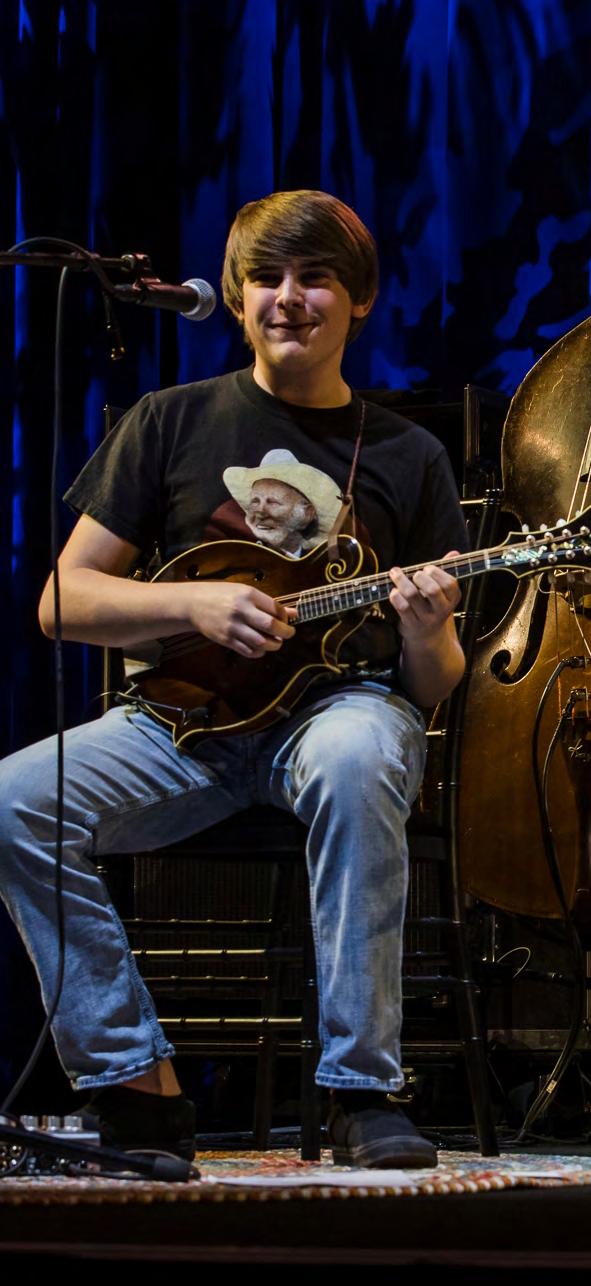
Catching up with Wyatt just as he was getting settled into his hotel room in New York City, he said, “I’m here for the Chris Thile camp. I’ll do that for a week.” It was Wyatt’s second trip to the Big Apple. “I came another time when I was really little – about five years old, so I don’t remember a whole lot.”

The mandolin phenom lives in Maryville, Tennessee, about twenty miles from Knoxville. As a young child, Wyatt heard the song “Rocky Top” with Bobby Osborne playing mandolin. “I grew up listening to that song at University of Tennessee games, and because of Bobby’s solo on the song, I wanted to learn how to play the mandolin.”
Like most boys, Wyatt had a full schedule with school, Boy Scouts, and team sports. Finding time to play an instrument wasn’t
52
Wyatt
Wyatt Ellis

 by Susan Marquez
by Susan Marquez
53
Photographer: Jesse Faatz
easy. But when he was ten years old, Wyatt convinced his dad to buy him a used mandolin so he could learn to play. “I wanted to play like Bobby.” Wyatt took weekly mandolin lessons and was soon attending local bluegrass jams. “We aren’t musical at all,” says Wyatt’s mom, Teresa Ellis. “But he was insistent on jumping in to play with other local musicians, so his dad and I drove him where he wanted to go.”
When COVID put a halt to most activities outside the home, Wyatt spent hours watching YouTube videos and practicing playing the mandolin. Many mandolin players started teaching online, and the community of mandolin players became even stronger via the internet. One of Wyatt’s mandolin heroes, Sierra Hull, understood Wyatt in a way few could. Hull was a mandolin prodigy, and she chose Wyatt to receive the Tennessee Folklife apprenticeship. It was the opportunity of a lifetime. “I worked on exactly what I needed to work on at the time – details,” says Wyatt. “Sierra has taken bluegrass to another dimension, and I was excited to start my journey with her.” Another of Wyatt’s mandolin-playing heroes is Marty Stuart, who has been working for the past few years to open the Congress of Country Music in his hometown of Philadelphia, Mississippi. When Stuart opened the Ellis Theatre in Philadelphia, Wyatt Ellis was on hand for the grand re-opening of the historic venue. “I did a solo show in a tent in front of the theatre for three nights,” says Wyatt. He opened for such seasoned performers as Ricky Skaggs, Vince Gill and the Gaithers. “I played a lot of old Bill Monroe tunes, as well as some of my own music.” A real Bill Monroe fan, Wyatt discovered a series of three Hatch show prints from the 1940s, which he has on loan to Stuart’s museum.
With a love of the history of music as much as the music itself, Wyatt incorporated that history into his new single, “Grassy Cove,” recently released on his own label, Knee High Records. The name of the record company comes from a line in the song “Nashville Cats” that says, “Yeah, I was just thirteen, you might say I was a musical proverbial knee-high.” The song was produced by Justin Moses, a talented multiinstrumentalist and Sierra Hull’s husband.
Not limited to the mandolin, Wyatt is also accomplished on the guitar, fiddle, banjo and vocals. But there is no doubt that Wyatt is destined to become the next breakout mandolin player. He has come full circle already, working with his musical idol, Bobby Osborne, in a one-on-one workshop via Skype through Scott Napier and the Kentucky School of Bluegrass. Something Wyatt is proud of is that CJ Lewandowski of The Po’ Ramblin’ Boys invited him to be on what would turn out to be Bobby’s final project.” Wyatt now owns Bobby’s mandolin. “I treasure it, knowing I have a piece of bluegrass history.”

54

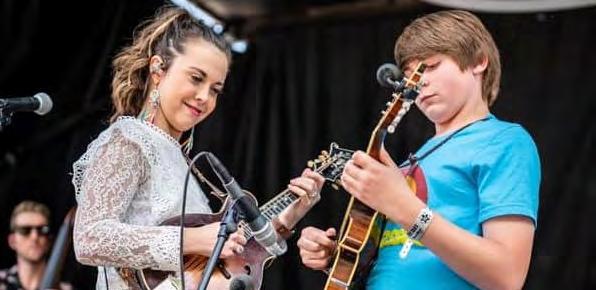
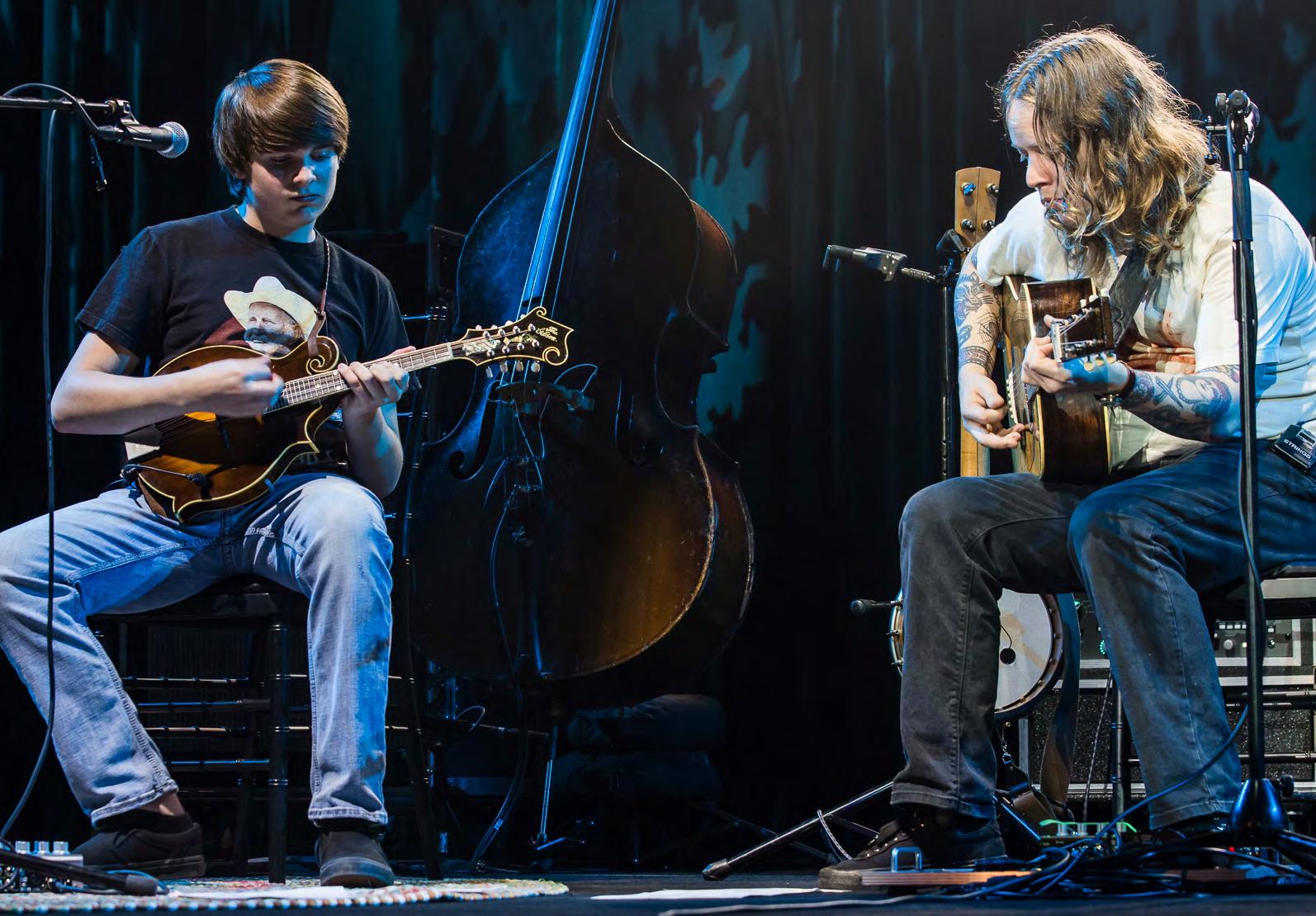 Photographer: Jesse Faatz
Photographer: Jesse Faatz
55
Photographer: Rob Laughter


56
Global flavors with local roots:
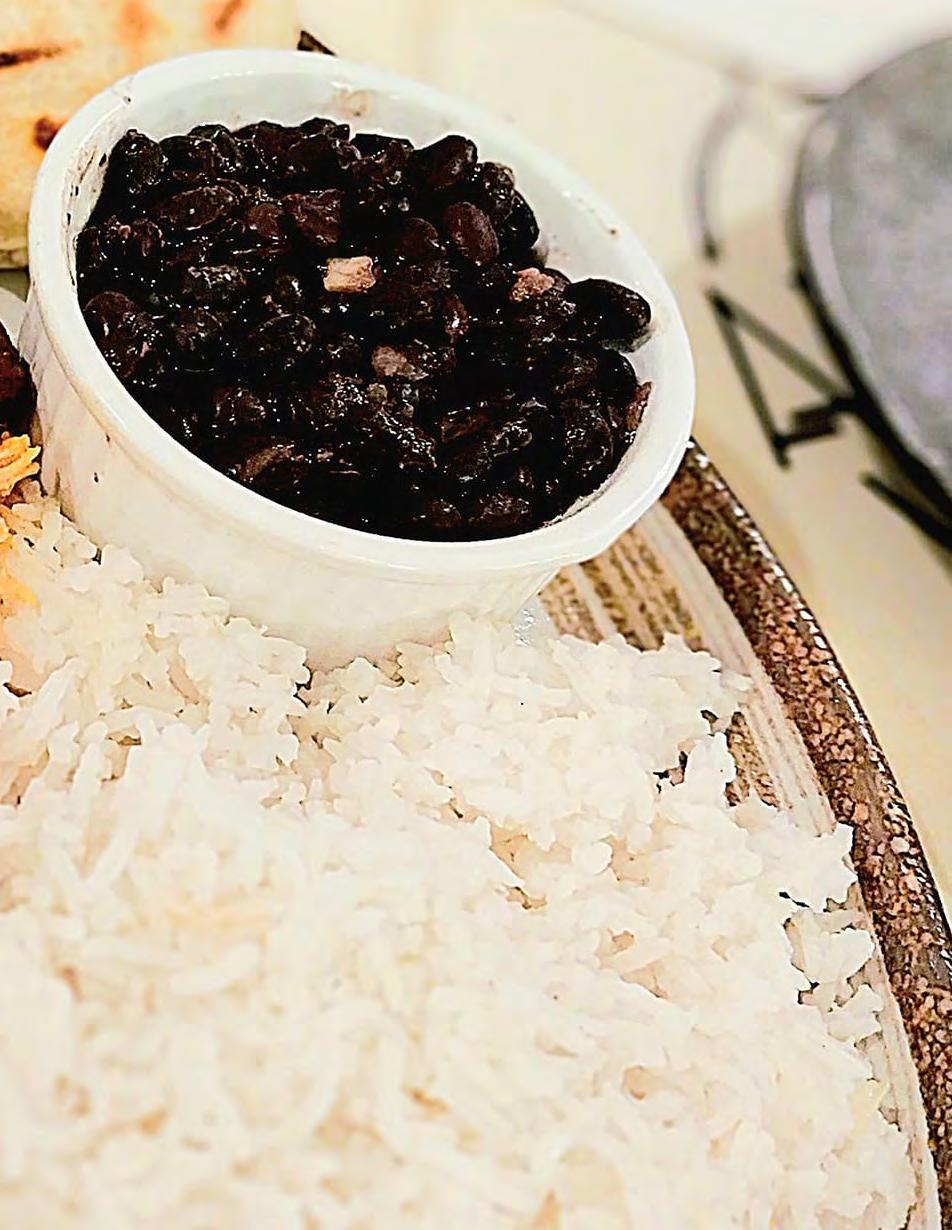
Appalachian restaurants feature international cuisine
by Candace Nelson
Global flavors with local roots: Appalachian restaurants feature international cuisine
By Candace Nelson
Appalachia is known for beans & cornbread, biscuits & gravy, and chicken & dumplings. But, the region’s food diversity spreads far beyond that traditional Scots-Irish heritage. Within this 14-state region, some restaurants take inspiration from every corner of the globe. From Asia to Africa and everywhere in between, international flavors are taking root at these local restaurants:
Poland
S&D Polish Deli
Pittsburgh, Pennsylvania
Pierogi — boiled wheat dumplings stuffed with potato and cheese and dressed with butter and onions — are the top seller at S&D Polish Deli in Pittsburgh, Pennsylvania. But there are plenty of Polish specialties, like Haluszki, a wide, buttery noodle with cabbage and seasoning.
Ethiopia
Addissae
Asheville, North Carolina
Asheville’s nationally acclaimed Ethiopian Restaurant, Addissae, serves up traditional Ethiopian dishes like Kitfo: Freshly minced, extra-lean beef seasoned with Ethiopian spiced butter, cardamom and mitmita (red chili powder). It is served with gomen (collard greens) and ayib (homemade cottage cheese).
Germany
Schulz Bräu Brewing
Knoxville, Tennessee
Established in 2016, Schulz Bräu Brewing contains Knoxville’s first German Biergarten. In addition to the craft beer made from German-imported grain, the menu includes genuine German cuisine, such as Fleischkäse Goulash - “One Slice of German Bologna, served on a Bed of Spätzle, Topped with Our Signature Mushroom Sauce, Garnished with Fresh Herbs.”
Venezuela
Arepas Coffee & Bar
Starkville, Mississippi
This Mississippi restaurant offers a dozen different types of arepas with your choice of base: corn, sweet potato, or plantain. Try the Pabellon, which contains shredded beef, black beans, cheese, and plantains and/or the Chicharron, which features fried pork, Venezuelan cheese and avocados.
57
China
Great Wall

Birmingham, Alabama
If you are looking for authentic Chinese food in Appalachia, look no further than Great Wall in Birmingham, Alabama. Owner Sunny Liu crafts dishes native to Shanghai and Sichuan, including Spicy Chicken and Vegetable Flaming Pan, Dan Dan Noodles, and Chen-Du Beef.
Cuba
Papi’s Cuban Grill
Lawrenceville, Georgia
Enjoy a taste of Cuba at this Georgia-based restaurant by ordering the sampler: (1) Papa Rellena, a fried potato puff filled with seasoned ground beef, (2) Croquettes de Jamon, spiced ground ham patties that are lightly breaded and fried and (4) Yuca Fries, crispy island style fries with Papi’s sauce.
France
Scoundrel
Greenville, South Carolina
Chef Joe Cash has spent years working in some of the best restaurants in the world, like Per Se in New York City and Noma in Copenhagen, Denmark. He is now serving classic French dishes at the Greenville, South Carolina, restaurant, such as duck liver mousse with pistachio, cherry jerez and grilled sourdough, as well as Russian Ossetra Caviar with duck fat potatoes, creme fraiche and chives.
Italy
Di Lisio’s Italian Restaurant
Winston-Salem, North Carolina
Voted as the best Italian restaurant in Forsyth County, Di Lisio’s Italian Restaurant features comforting Italian American dishes for the whole family, such as Veal Saltimbocca - sauteed veal, fresh herbs, and prosciutto in a marsala mushroom sauce over pasta - and Paccheri Napoli - sauteed lobster cooked in a fresh cherry tomato sauce and topped with fresh lump crab meat.
Brazil
Gaucho Brazilian Grille
Blacksburg, Virginia
According to the website, you are encouraged to sit back, relax, and spoil yourself at Gaucho restaurant. Gaucho’s reinterpretation of famous and traditional Brazilian dishes includes Estrogonofe, a Brazilian Stroganoff with cream sauce and tender Picanha (beef culotte), chopped garlic, sweet onions, and sliced baby mushrooms, all quickly sautéed and combined with a hint of Cognac spirit and adobo and served with a side of jasmine rice and potato sticks.
Vietnam
Pho Viet Restaurant
Hagerstown, Maryland
Pho Viet Restaurant is known for its pho, a rice noodle soup served with bean sprouts, jalapeno, and lime on the side. The beef broth soup can be served with rare beef, well-done flank steak, tendon, trip or beef meatball. Another local favorite are the vermicelli salad bowls, served with vermicelli, lettuce, bean sprouts, cucumber, pickled carrot, mint, and fish sauce on the side.
58



59
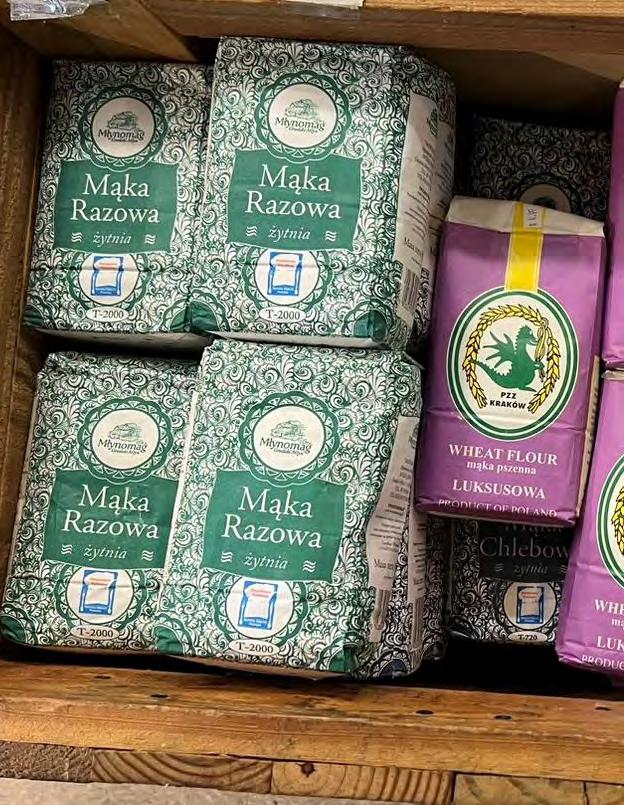



60
Japan
Sawa Japanese Cuisine
Youngstown, Ohio
Locally owned and operated Sawa Japanese Cuisine in Youngstown, Ohio, brings authentic Japanese to this landlocked state. The sushi bar’s entrees include chirashi, seasoned sushi rice topped with assorted raw fish, and sashimi like maguro, hamachi, uni, mackerel, and tako. In addition, the restaurant offers udon, yaki soba, katsu, and more.
Peru
Miskycha
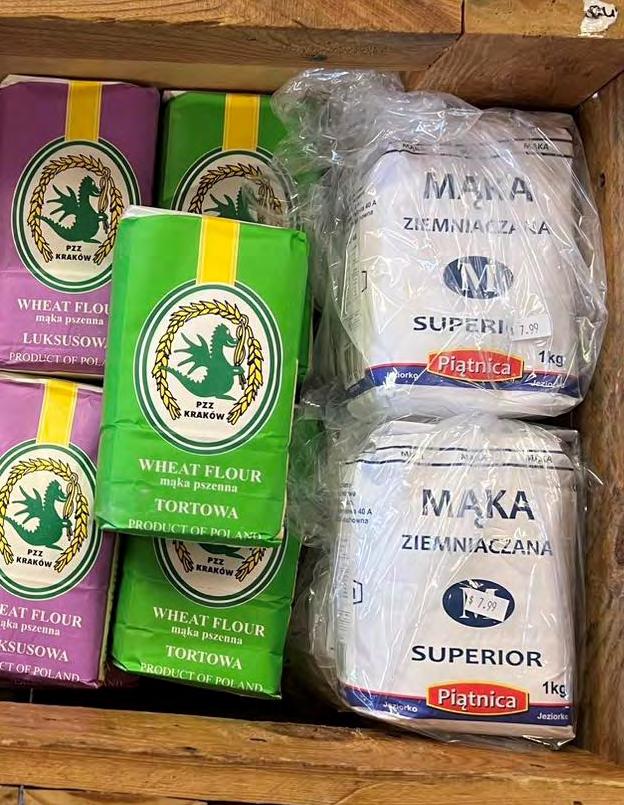
Bridgeport, West Virginia
Translated to “very delicious” in Ketawa, the native language of Peru, Miskycha highlights authentic Peruvian meals from the regions of the owners’ childhood. With dishes from the coast, the highlands and the jungle, options are varied and include Huancaina, a spicy, creamy sauce made with Peruvian yellow pepper served over a bed of potatoes, and Lomo Saltado, tender beef, tomatoes, and onions sauteed in soy sauce and served with fries and white rice.
Thailand
Thai Time
Binghamton, New York
Thai Time might be 8,539 miles away from the native roots of its recipes, but that doesn’t mean the restaurant doesn’t hold true to its cultural heritage. Serving dishes like Tom Yum Goong, a hot and sour shrimp soup with lemongrass galangal kaffir lime leaves, onions, celery, tomatoes, mushrooms and lime juice, Thai Time features classic Thai dishes in addition to fusion meals.
61
Marty Falle Brings the Legacy of Kentucky
Bluegrass Forward From Past to Present
By Lee Zimmerman
It could be claimed without any exaggeration whatsoever that singer, songwriter and musician has always had bluegrass in his blood. It was infused early on, when, after watching re-runs of “The Andy Griffith Show” as a youngster, he became fascinated by the show’s “house band,” a fictitious group called The Darlings, who were played by The Dillards, a real-life group that were responsible for transitioning the archival sounds of mountain music into a sound that could be admired, appreciated and enjoyed through populist appeal. Falle’s fondness for the form was further nurtured while living in Athens Ohio and frequenting a local record store that featured live bluegrass on an ongoing basis. Having dabbled in music while in high school, he relocated to Eastern Kentucky after college, and it was there that he immersed himself in the traditional template so essential to the music of that particular region.
Years later, Falle still cherished the memories that were made there. While he would eventually spend time in Nashville — where he met Jonathan Yudkin, the producer who sat behind the board for his new album, My Farm, My Bluegrass — he continues to call Appalachia home.
A follow-up to Kentucky Bluestar, Falle’s first full foray into authentic bluegrass music, the tellingly-titled My Farm, My Bluegrass naturally brings high expectations. After all, Kentucky Bluestar reaped any number of critical kudos. The title track, and the album’s first single, was a Top Ten hit, debuting at Number Six before reaching Number Two on The Bluegrass Today Singles Chart. It then climbed to Number One on the Bluegrass Jamboree Top 100. In addition, it found its way to Number Eight on the Top 50 APD Bluegrass / Folk Albums and debuted at Number Six on The Bluegrass Today Singles Chart. The album also made it to Number Eleven on The ADP Global Radio Indicator.
The critics took notice as well. Falle graced the cover of The Bluegrass Standard Magazine this past June. In April, Falle was spotlighted for a feature story in Bluegrass Today Magazine, one in which he was described as “an artist well worth your attention.” The kudos then continued from there. He was designated as Artist of the Month by Ohio Bluegrass deejay Michelle Lee and featured in an article in Country Music International in Europe. More recently, Falle was singled out in Germany’s CountryMusicNowInternational after hitting Number One on its chart.
It’s hardly surprising then that My Farm, My Bluegrass maintains the lingering legacy that’s so vital to the essence of American music. Despite that high bar established by Kentucky Bluestar, its successor has already found similar success. The downloads credited to deejays worldwide were significantly higher than that of the previous release. So too, within the first 48 hours of its release on August 26th, My Farm, My Bluegrass successfully scaled the APD Global Radio Indicator Chart, a chart that ranks all musical genres, and then quickly climbed to Number One. Just as
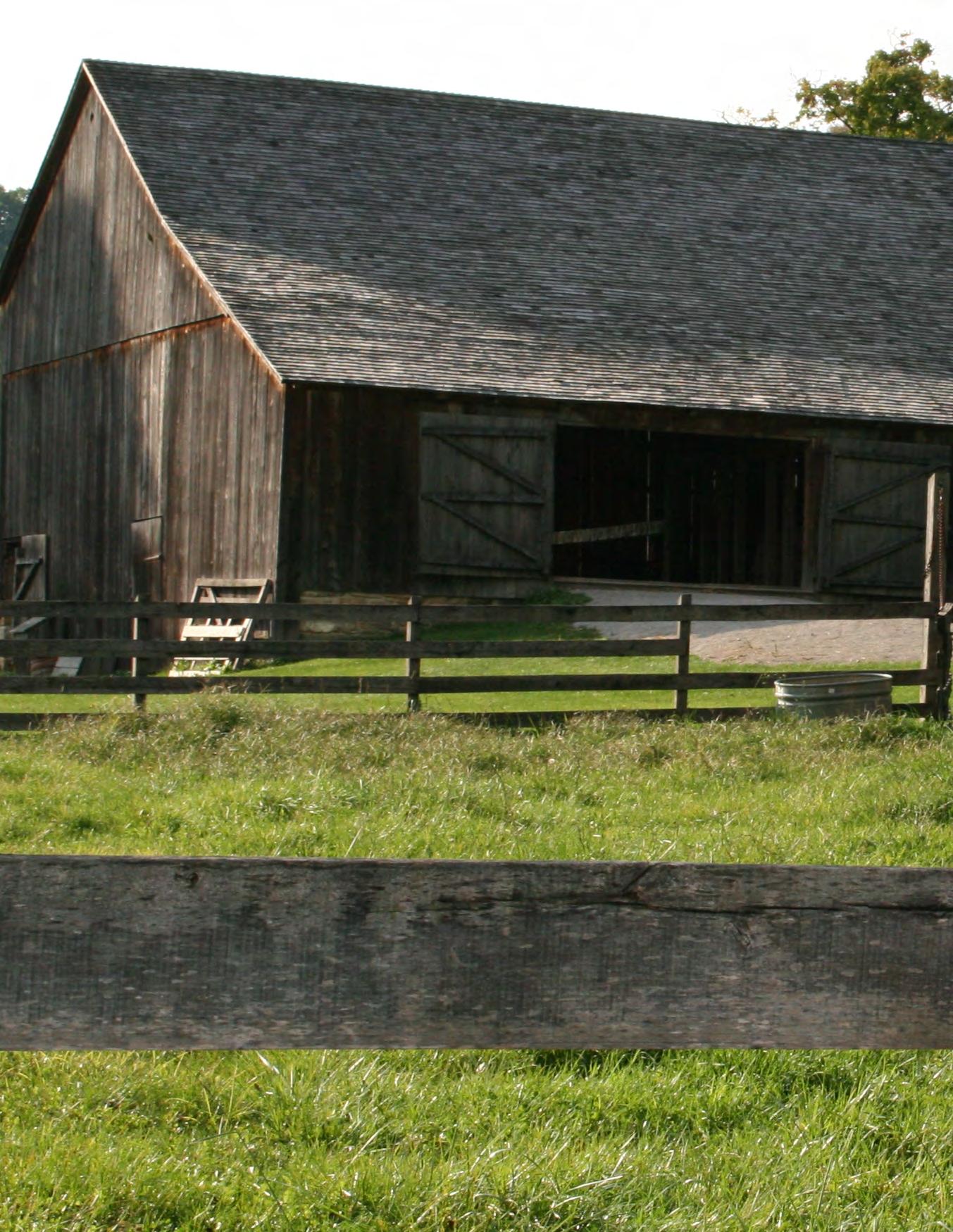
62
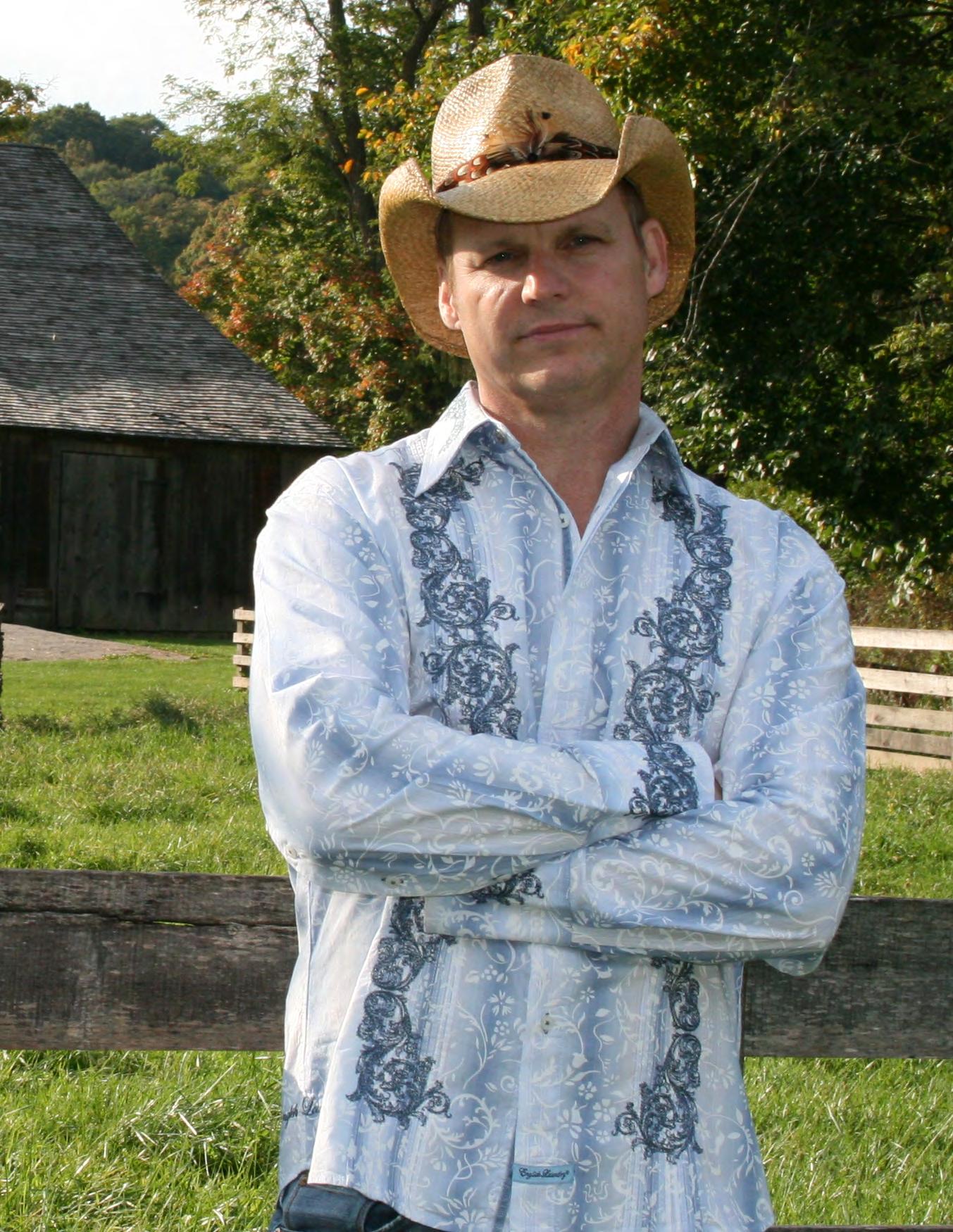
63
impressively, out of the top ten singles on the APD Bluegrass Global Radio Indicator Chart, eight were from My Farm, My Bluegrass. Likewise, the album’s first single, “Ode to Ale 8,” featuring six-time Female Bluegrass Vocalist of the Year Dale Ann Bradley, tied for Number One on APD Global Radio Indicator Chart for Bluegrass singles on the first day of its release.

In a larger sense however, My Farm, My Bluegrass details the lingering legacy of bluegrass music itself, all gleaned through the lens of Falle’s personal perspective. A history major in college, he retains a fondness and connection to the stories spawned from that historical region. Previous songs, such as “Renfro Valley Barn Dance,” “Shiloh,” “Bloody Coal, Bootlegger,” “Appalachia River Song,” Virgin on the Bluegrass,” “Revenuer Blues,” “Cherokee,” and “Kentucky Bluestar,” gained significant popularity by retelling stories inherent to the American heartland.
Falle pursues the same tack on the new album, culminating in what could be called a journey through an ongoing trajectory. The music, all entirely originals, culls the various stylistic strands of the archival influences found in Irish, Scottish and English folk music, which then found its way into American country and mountain music, courtesy of those who made their way overseas to resettle in Appalachia. History and happenstance evolved from there.
“The roots of bluegrass music go back to the 1600s,” Falle explains. “They were brought to Kentucky and surrounding states by those Irish, Scottish and English settlers. Bill Monroe, who was born in Kentucky, is generally cited as the father of bluegrass music, given that he popularized that particularly breed of country music which he then dubbed ‘bluegrass,’ after the bluegrass region of his home state.”
Falle notes that those archival origins are still vital today, and it’s those traditions that are infused into the new album. “Kentuckians have been wearing out shoe leather at informal jamborees since the state was settled over two hundred years ago,” Falle notes. “A Rosine barn dance helped launch Bill Monroe’s career. Even today, Appalachian cloggers and square dance callers celebrate the unique musical culture of
64
Kentucky.”
Consequently, those early influences figure prominently in each of the new songs.
For example, “Kentucky Sons of Ireland” and “Appalachia Irish Dance” take the listener back to bluegrass’s early beginnings, each an effusive, upbeat and evocative example of spirited sentiment applied to the traditional tapestry of the British Isles. The use of penny whistle underscores the authenticity.
“Kentucky Proud” offers an affirmative nod to home and hearth, and the pride of those who freely share a timeless heritage with purpose and pride. It’s the sound of old-school country music imbued with a sense of drive and determination. The lively “Big Barn Breakdown” captures the joy and jubilation that made life so special and precious. It evokes the sound of the gatherings that took place after the work was done and those who plowed the fields would gather with friends and neighbors to celebrate that rural Kentucky culture with all its down-home designs.
Those shared sentiments aside, spirituality plays a big part in the musical mix as well. “Praise the Lord and Pass the Gravy” and “Bluegrass Holy Land Breakdown” are each flush with dedication and devotion. So too, the moving and memorable track titled “The Calling” finds Falle quoting scripture, specifically Philippians 3:14, which inspires the faithful to press on towards finding the fulfillment that comes with worshiping the Lord. “It’s the core of my spiritual beliefs and what I am trying to achieve,” Falle says.”
There’s a light up in the sky I must have prayed to you a thousand times Please help me see, please help me find The calling…
Forget the things that are behind the perfect sight known to the blind With faultless heart and true piece of mind The calling…
Throughout the album, Falle intersperses brief yet engaging bluegrass breakdown instrumentals while creating a musical thread and effectively connecting the songs. “Big Barn Breakdown,” “Unbridled Breakdown,” “Back Forty Breakdown,” “Chimney Letters” and “Bluegrass Holy Land Breakdown” affirm the album’s celebratory stance and while providing absolute authenticity.
Naturally, it took an exceptional group of musicians to bring the project to full fruition. Falle and his producer, Jonathan Yudkin, all but assured that success by assembling an all-star band that to back-up Falle as he sang lead and backing vocals and played rhythm guitar. Yudkin contributed fiddle and mandolin and also oversaw an erstwhile ensemble that includes Carl Miner (guitar), Michael Bub (acoustic bass), Rob Ikes (dobro), Josh Matheny (dobro, lap steel, mandolin), Matt Menefee (banjo), and Tim Carter (banjo). In addition, Marty Slayton, Kim Parent, and Marcia Ramirez
65
contribute backing vocals. Dale Ann Bradley shares lead vocals on “Ode to Ale 8”, “Chimney Letters” and “Praise the Lord and Pass the Gravy.” The album’s cover art was the work of Disney artist, TJ Matousek.
Each of these individuals boast distinguished resumes that not only confirm that fact they’re tops in their respective fields, but also offer a testament to a clear musical mantra. Falle’s made it his mission to weave together bluegrass basics and ensure an enduring and indelible connection to the culture and heritage of his Eastern Kentucky environs.
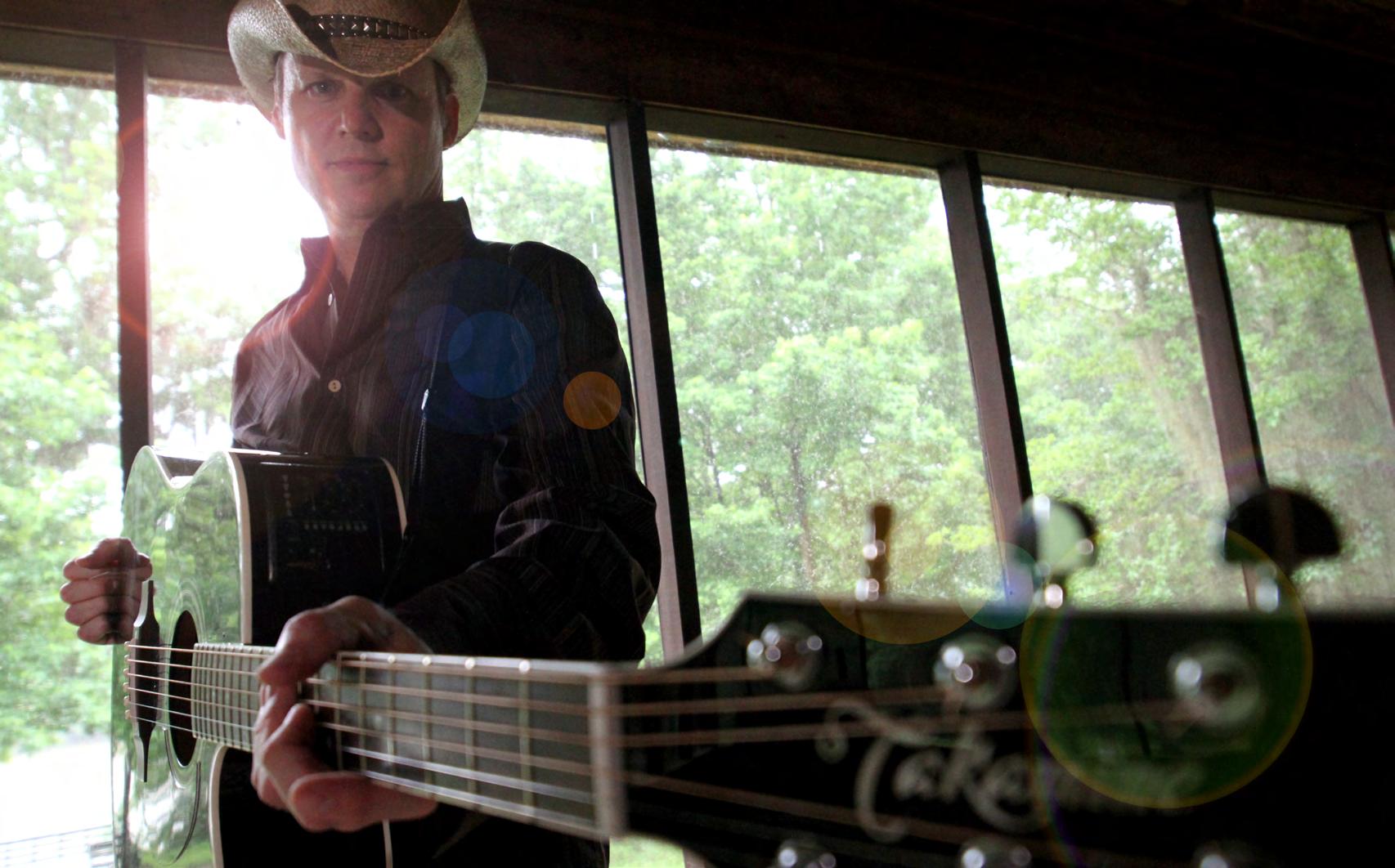
However, in a larger sense, My Farm, My Bluegrass epitomizes what bluegrass itself is all about, a sound based around a tightly knit instrumental core that embellishes the melody as other players take turns at soloing. It’s around flush with improvisation, typically termed a “breakdown.” While old-time music may be characterized as having one player or another at the forefront while other musicians provide accompaniment, breakdowns are characterized by rapid-fire tempos and an instrumental dexterity that’s both fervent and finessed.
In that regard, Falle captures the true spirit of a sound that’s gained the populist precepts that’s so vital to the common bond that today’s bluegrass readily embraces. As a result, My Farm, My Bluegrass offers a specific sanctuary, where sentiment, skill and satisfaction are safely secured in community confines.
It’s a place where all are welcome to visit and reside.
66

67
FAN PHOTOS
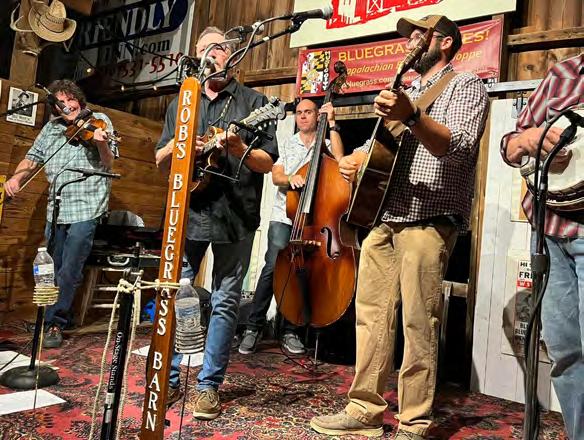
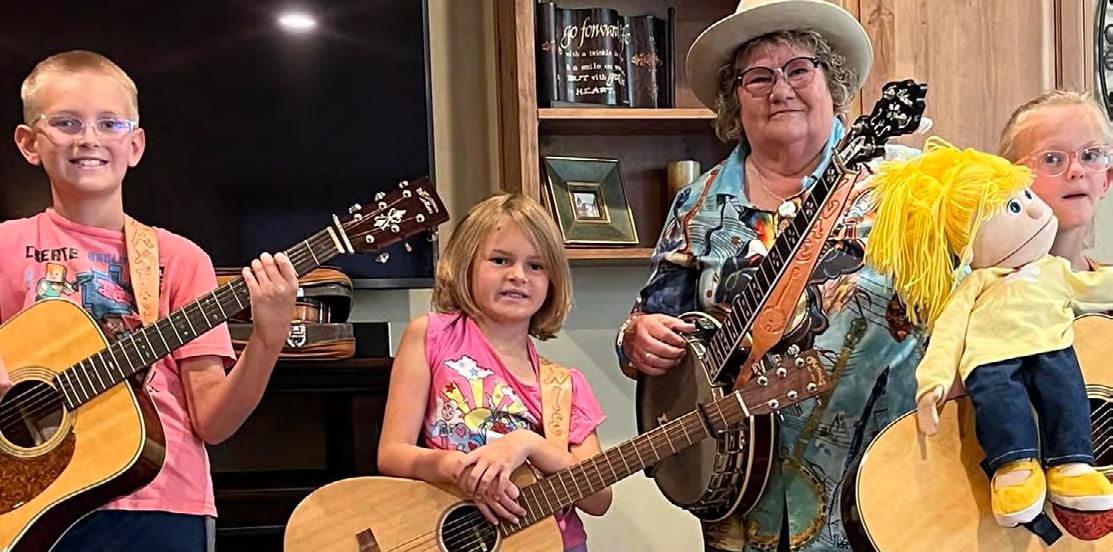




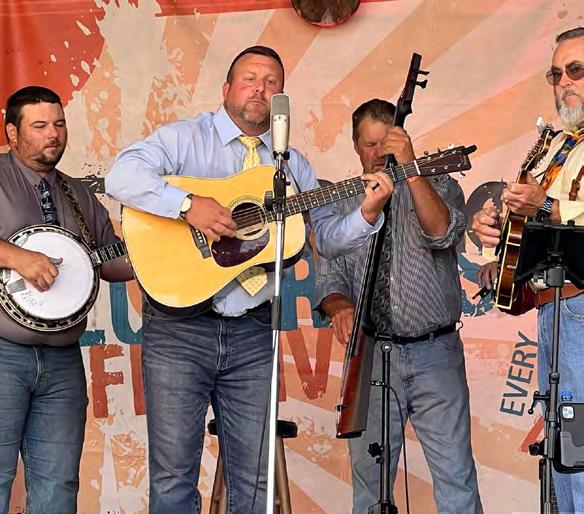

68


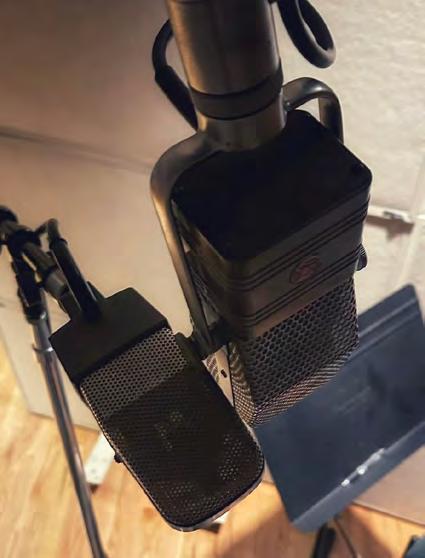

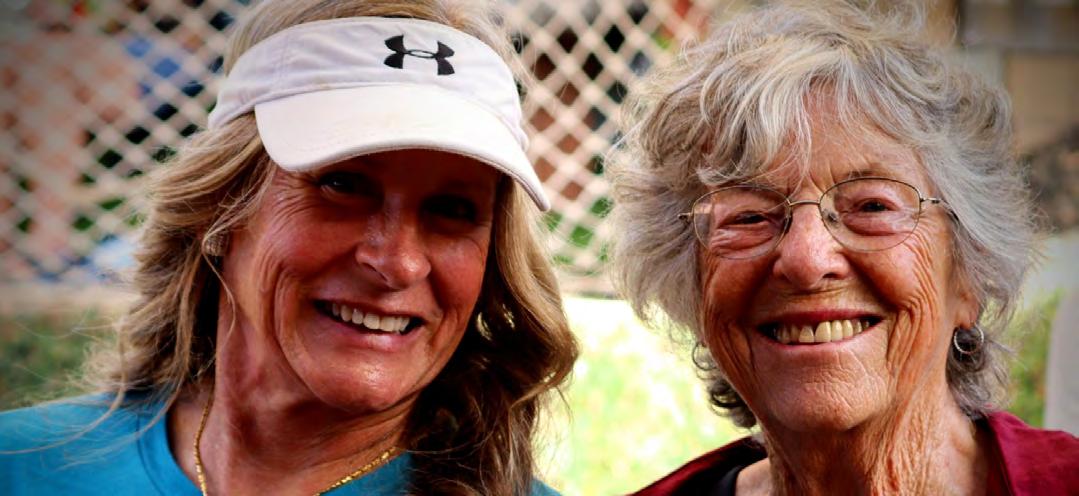


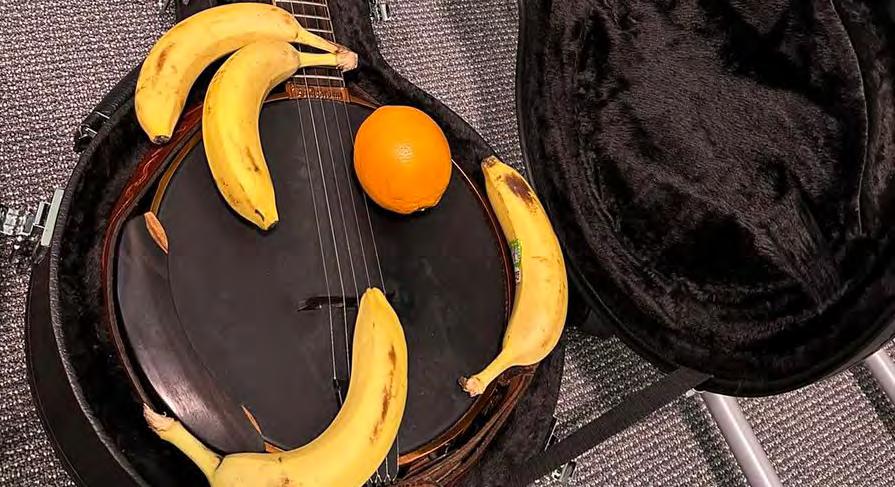
69

70




























 by Susan Marquez
by Susan Marquez














 by Susan Marquez
by Susan Marquez













































 Photographer: Jesse Faatz
Photographer: Jesse Faatz

































